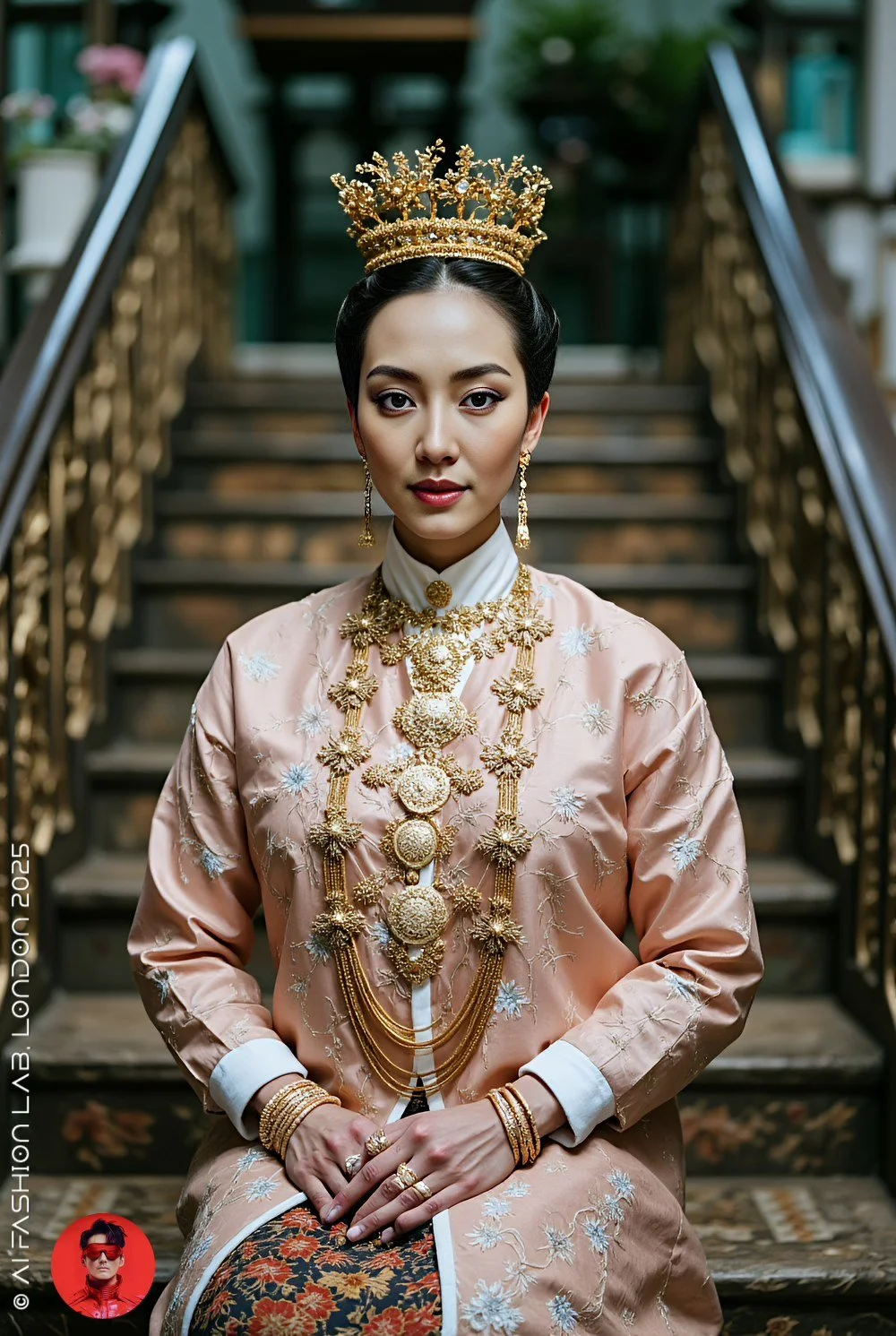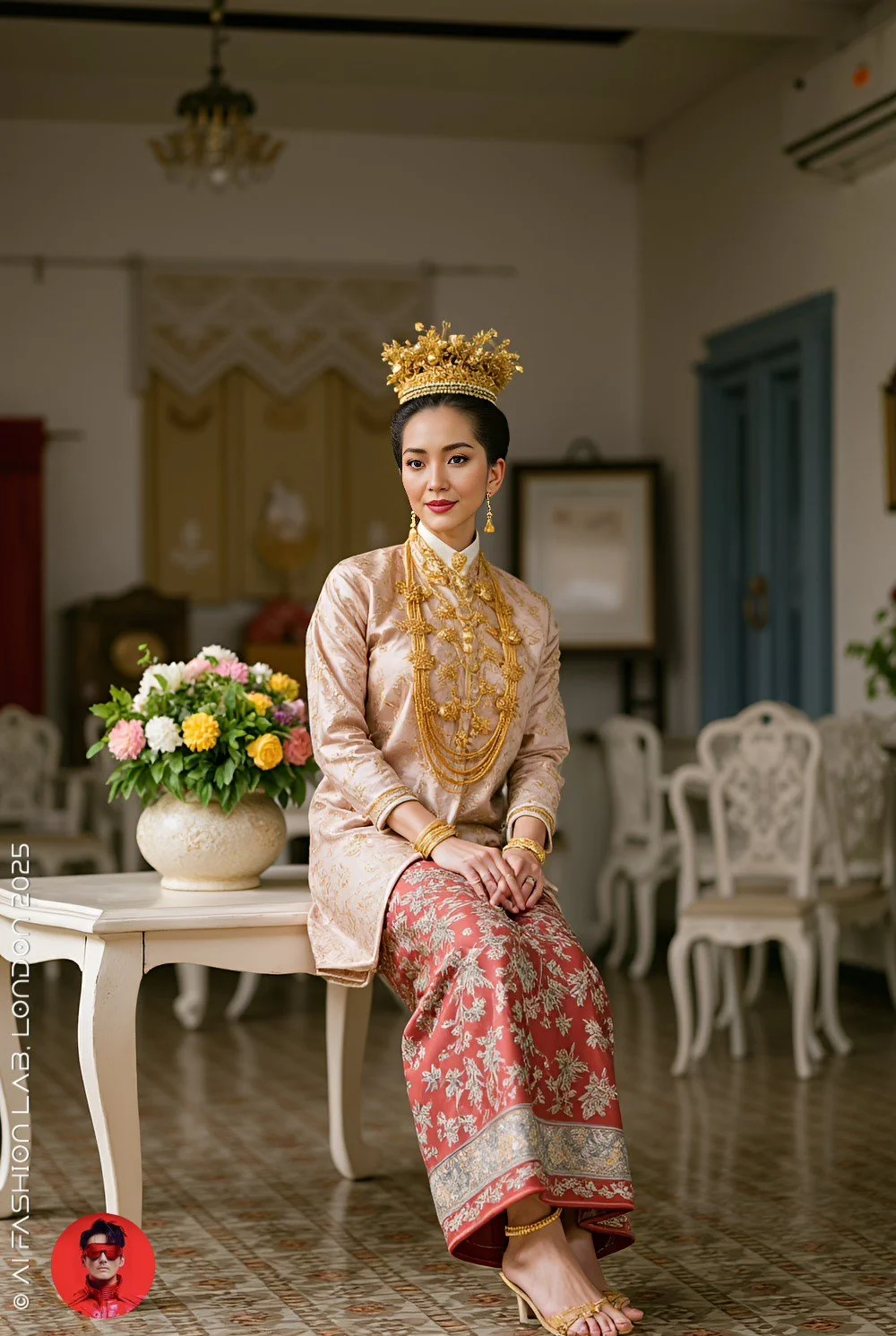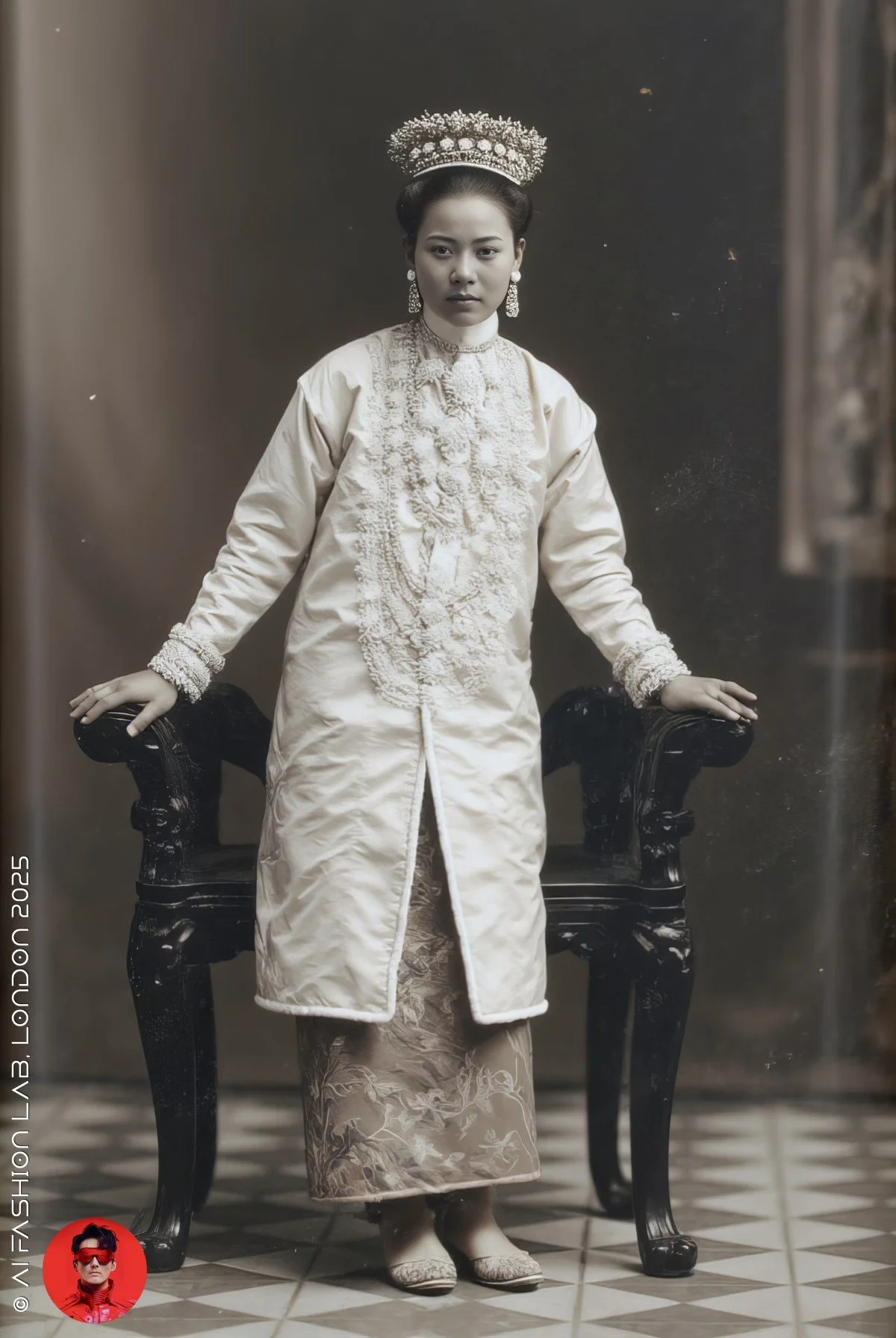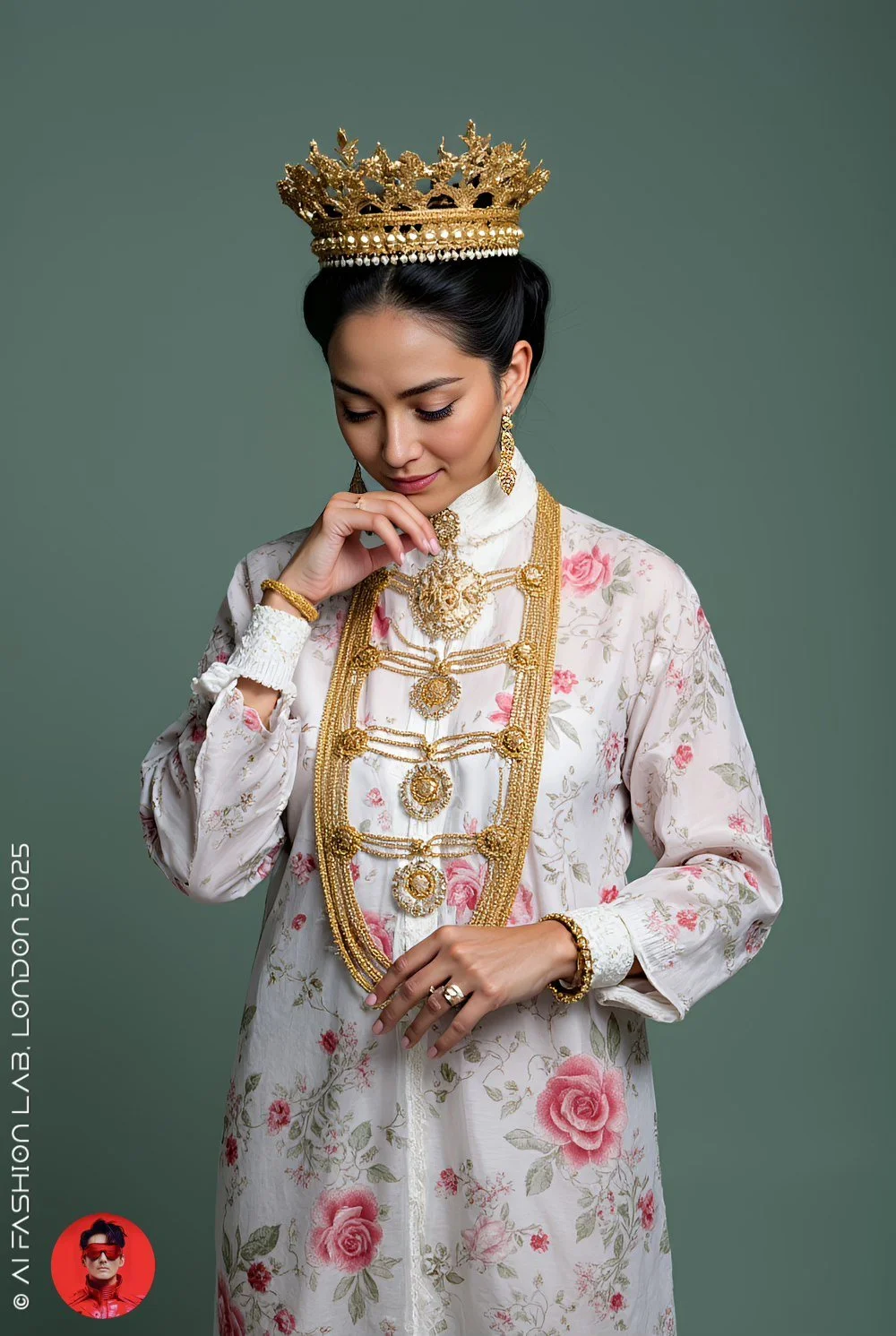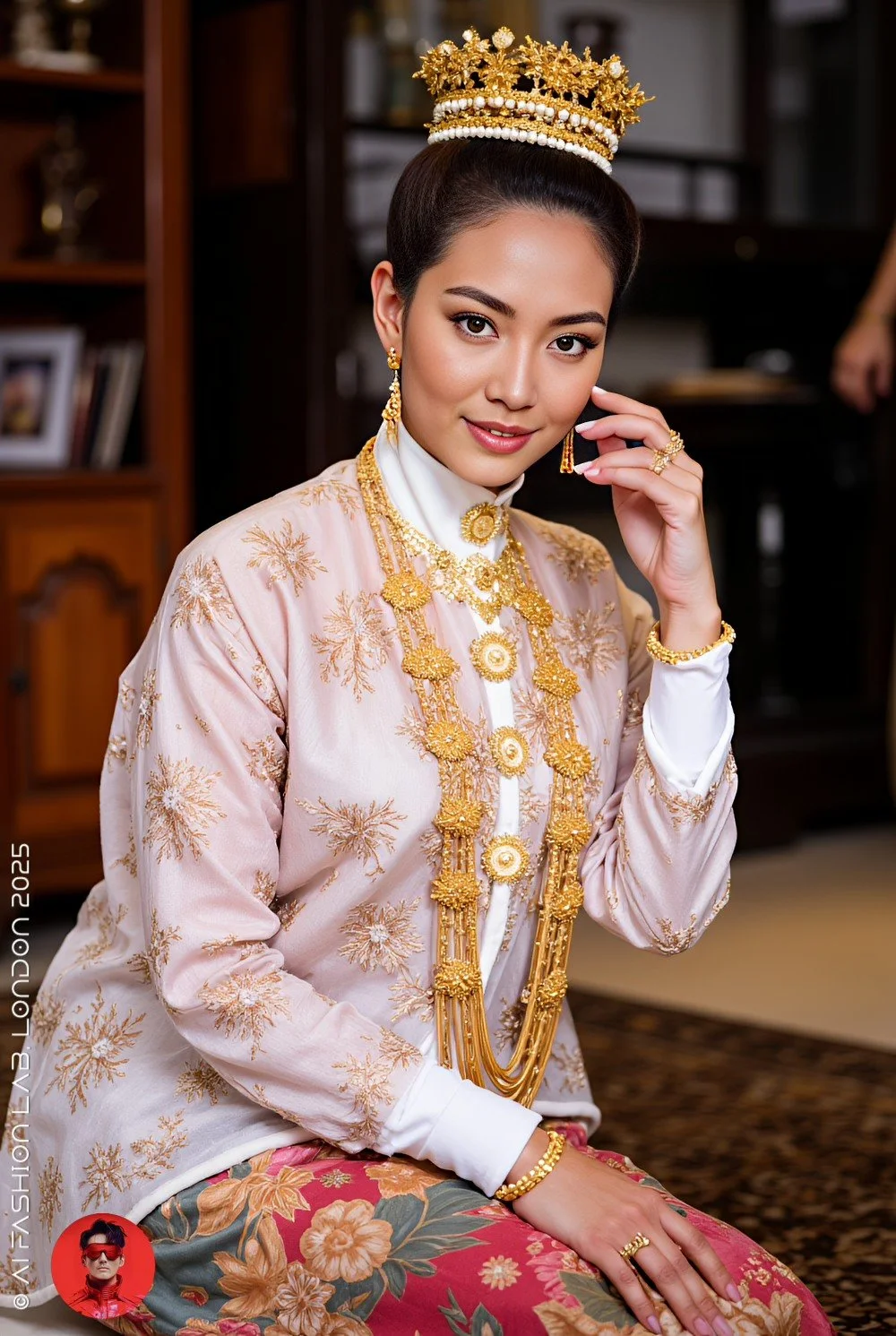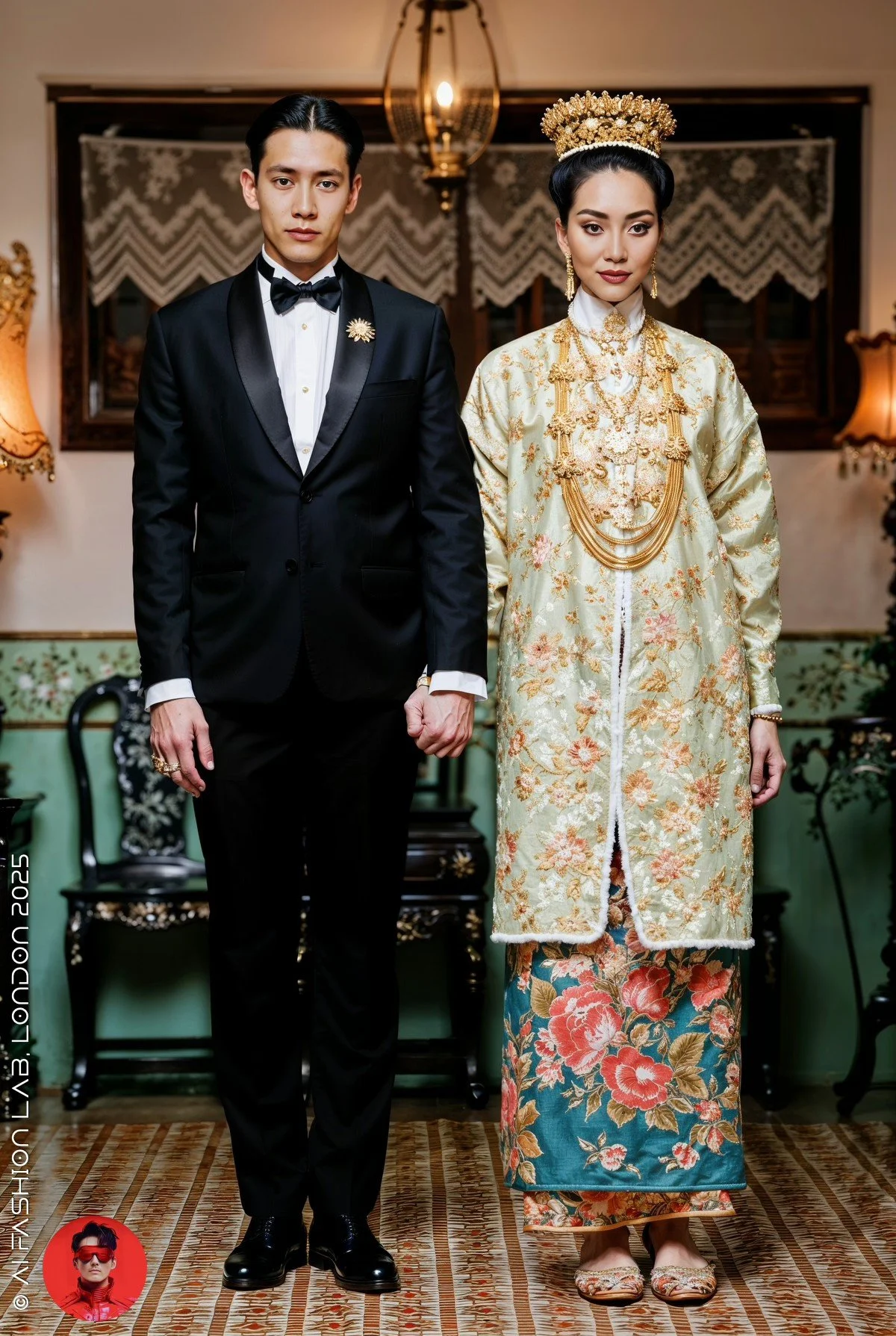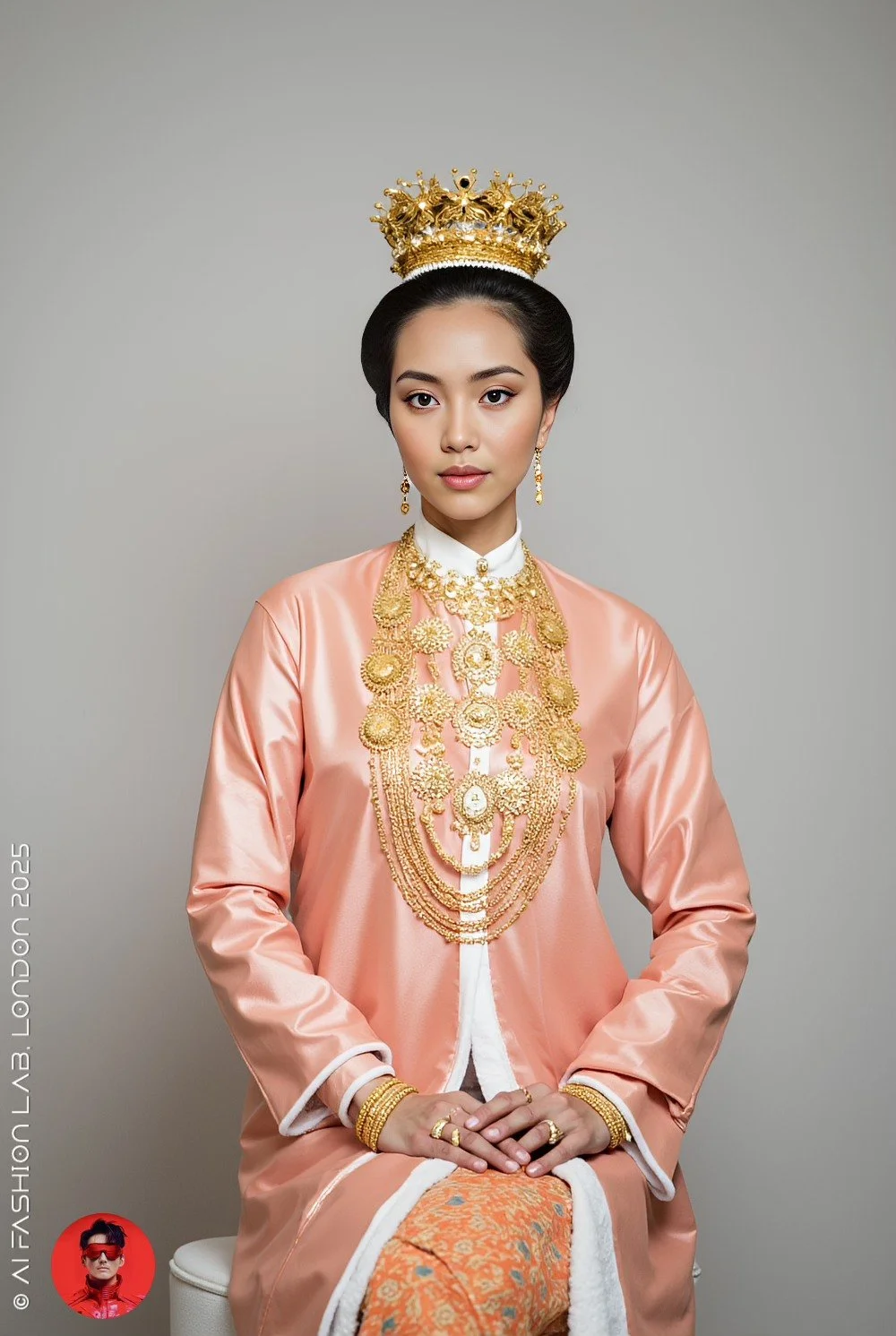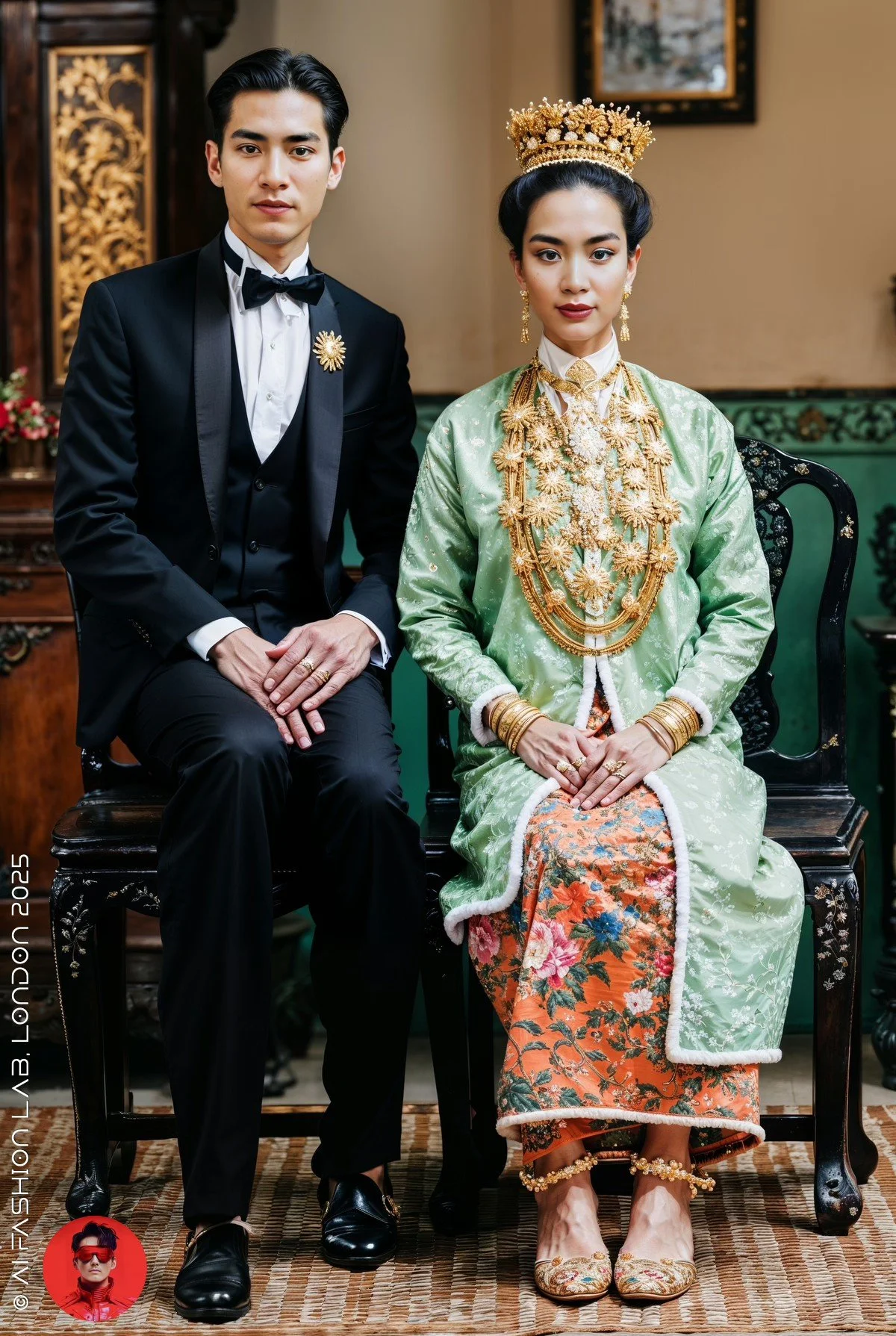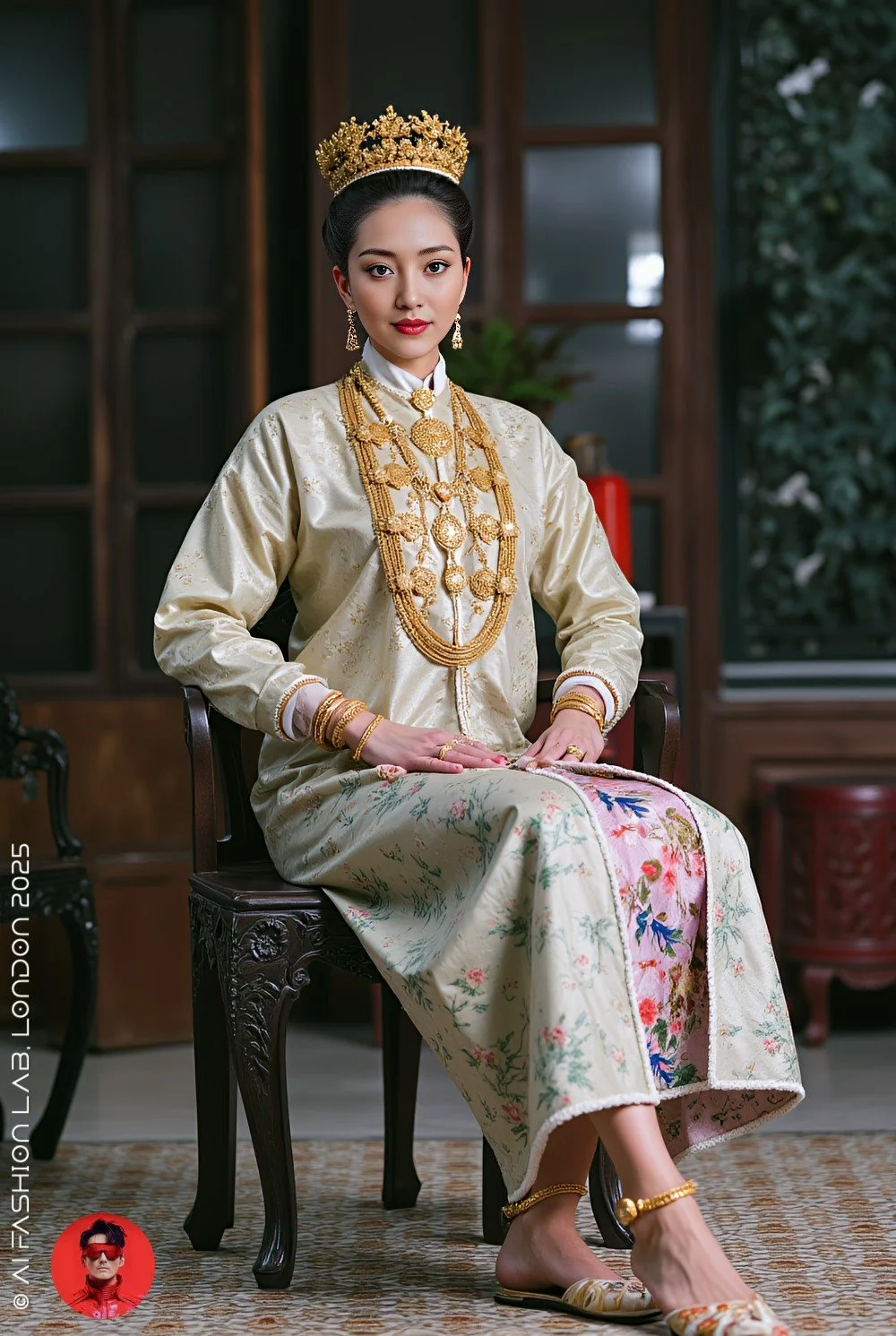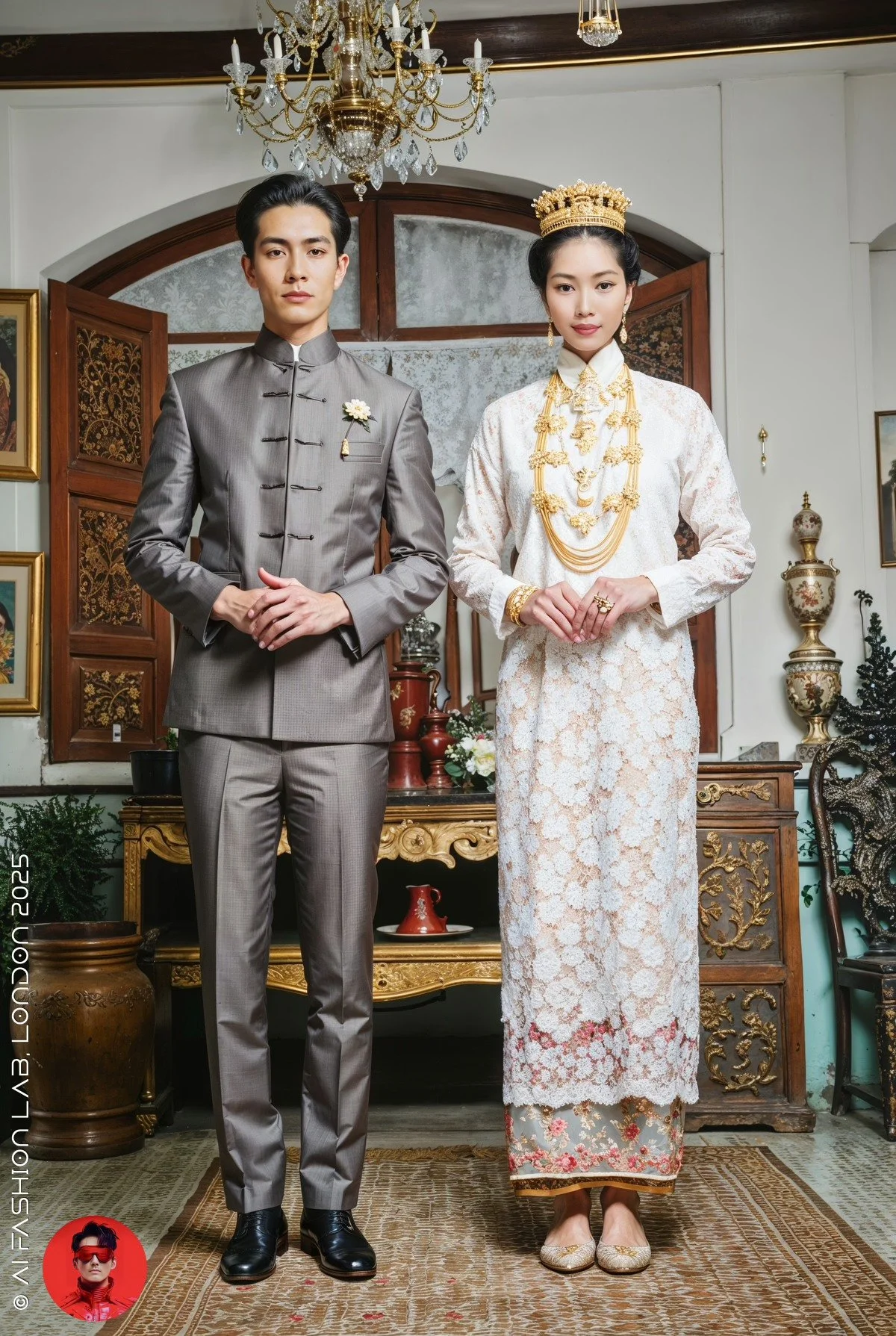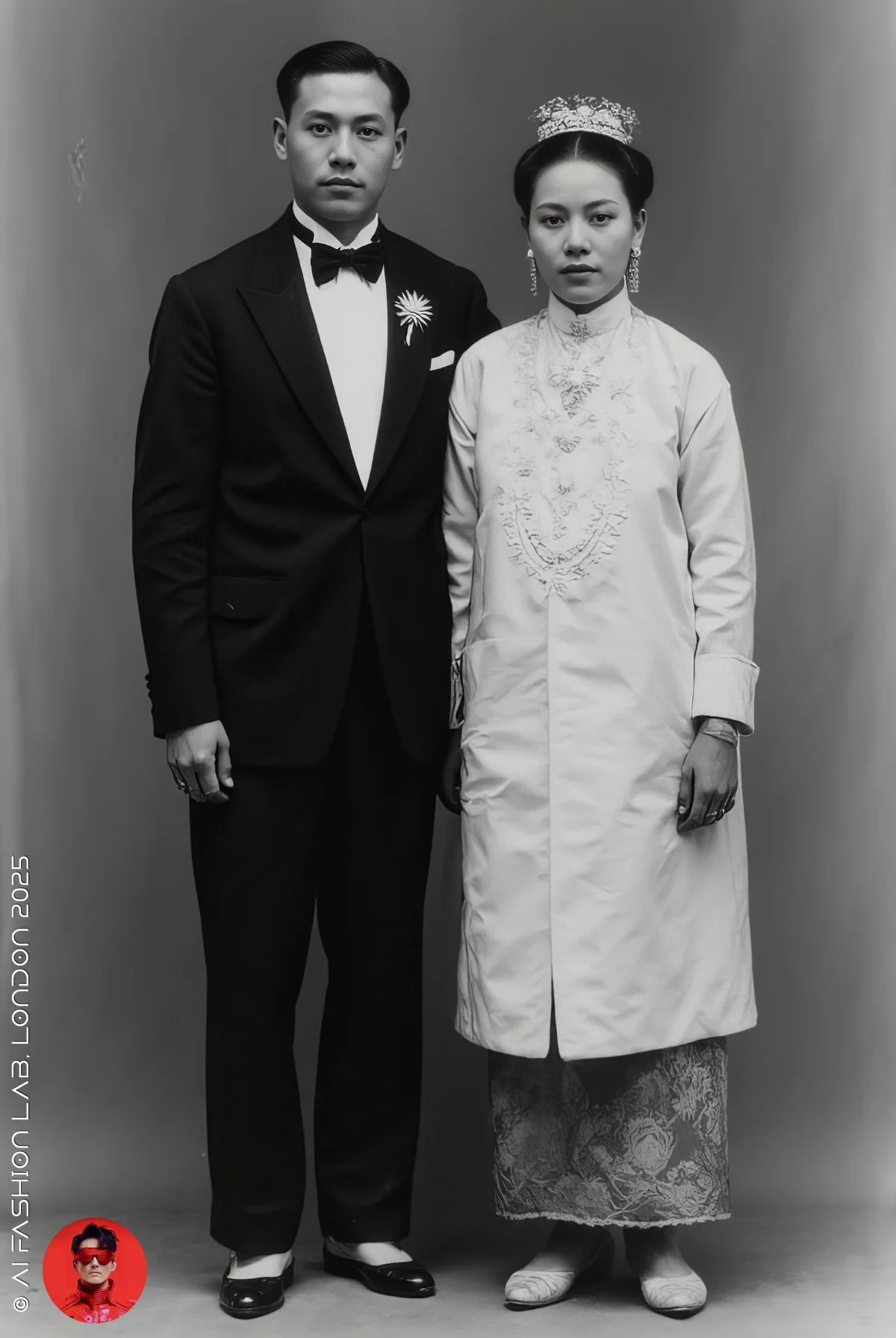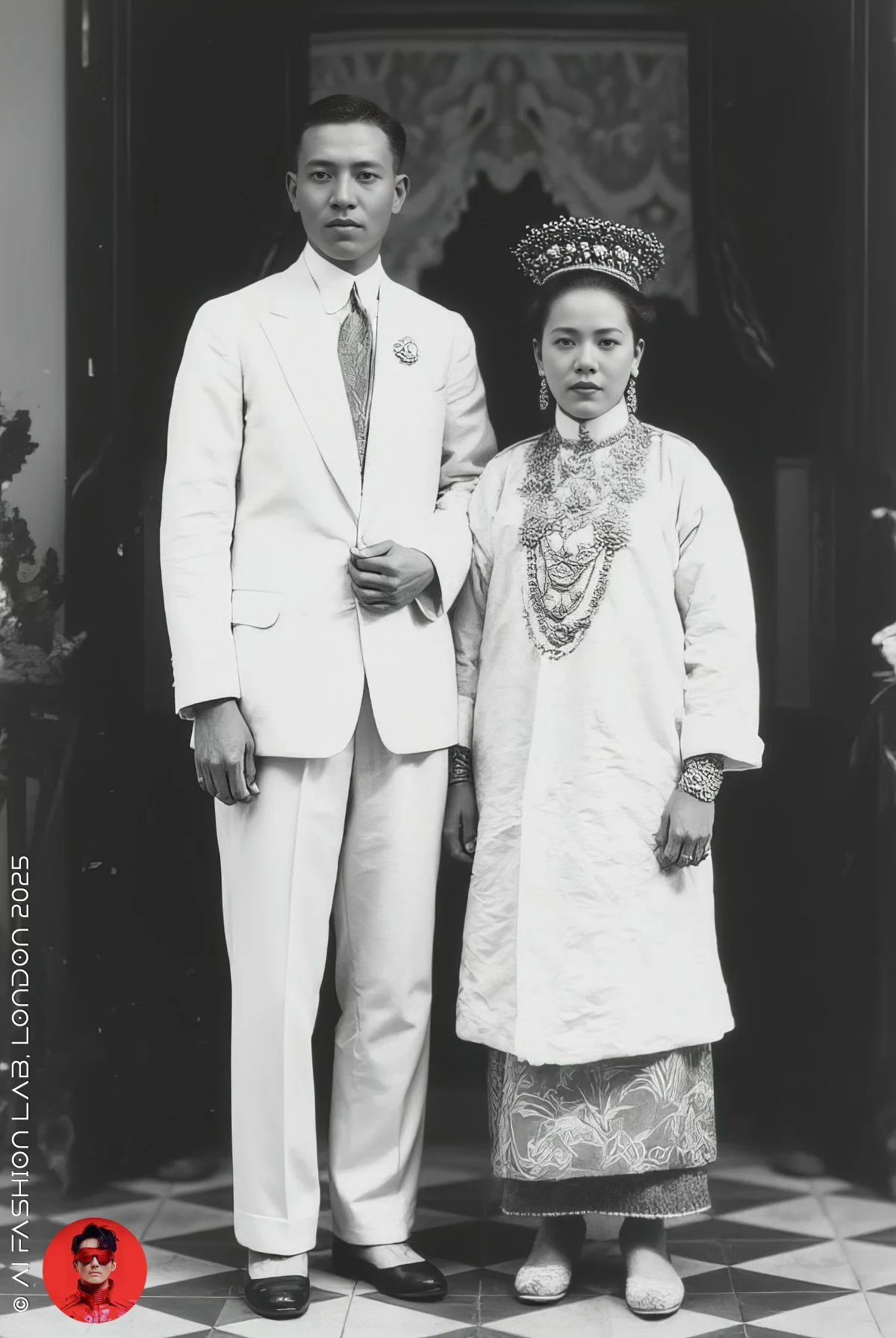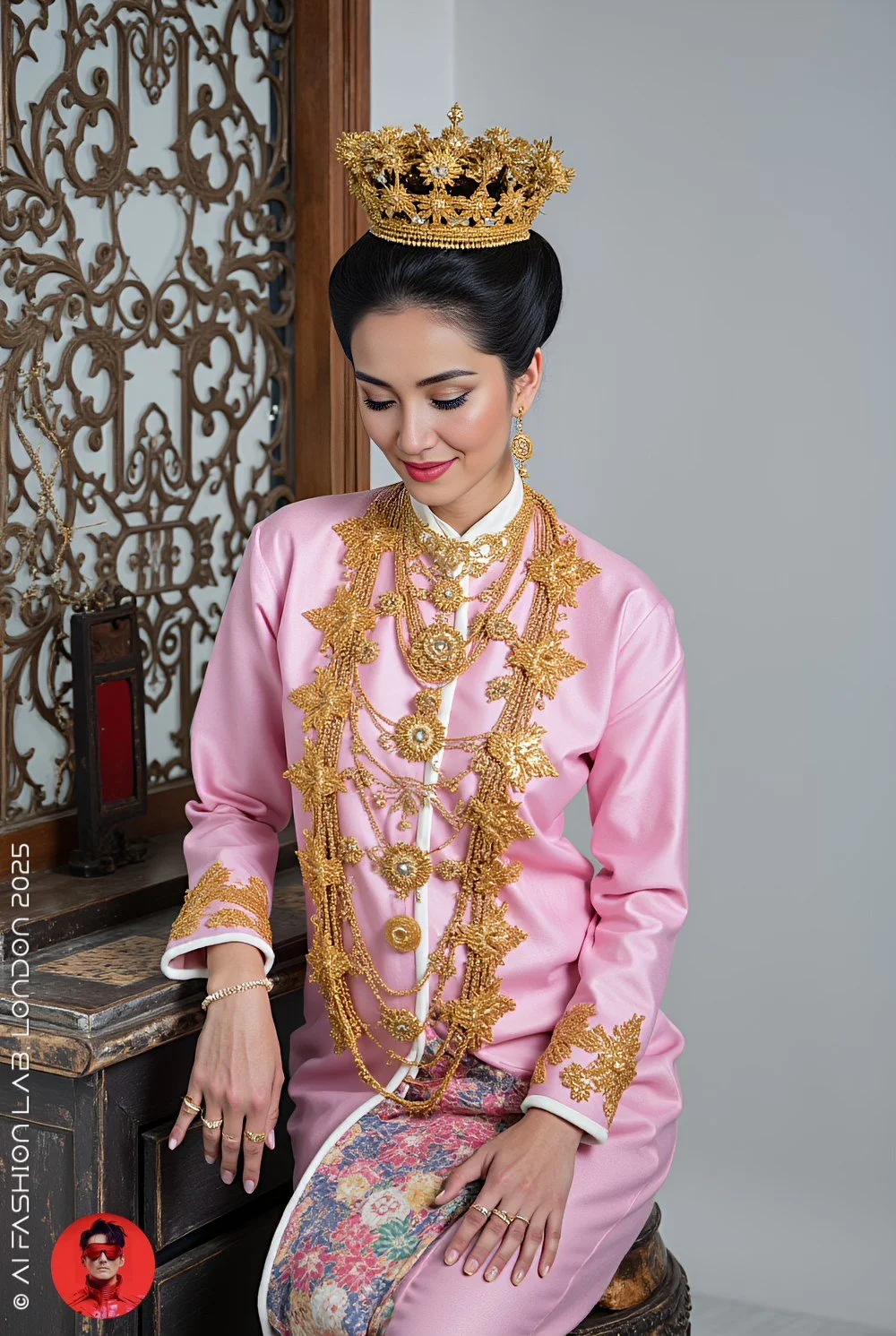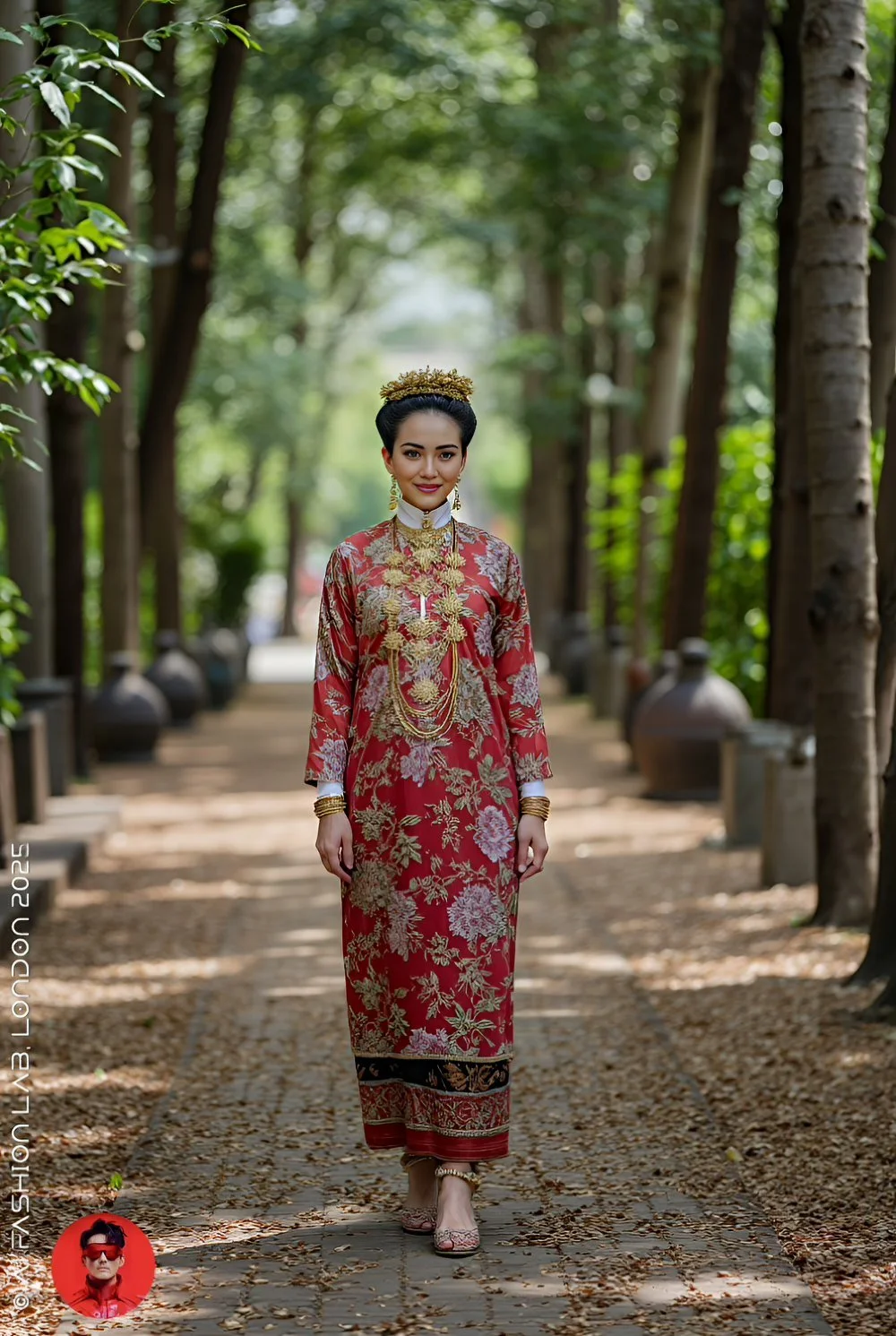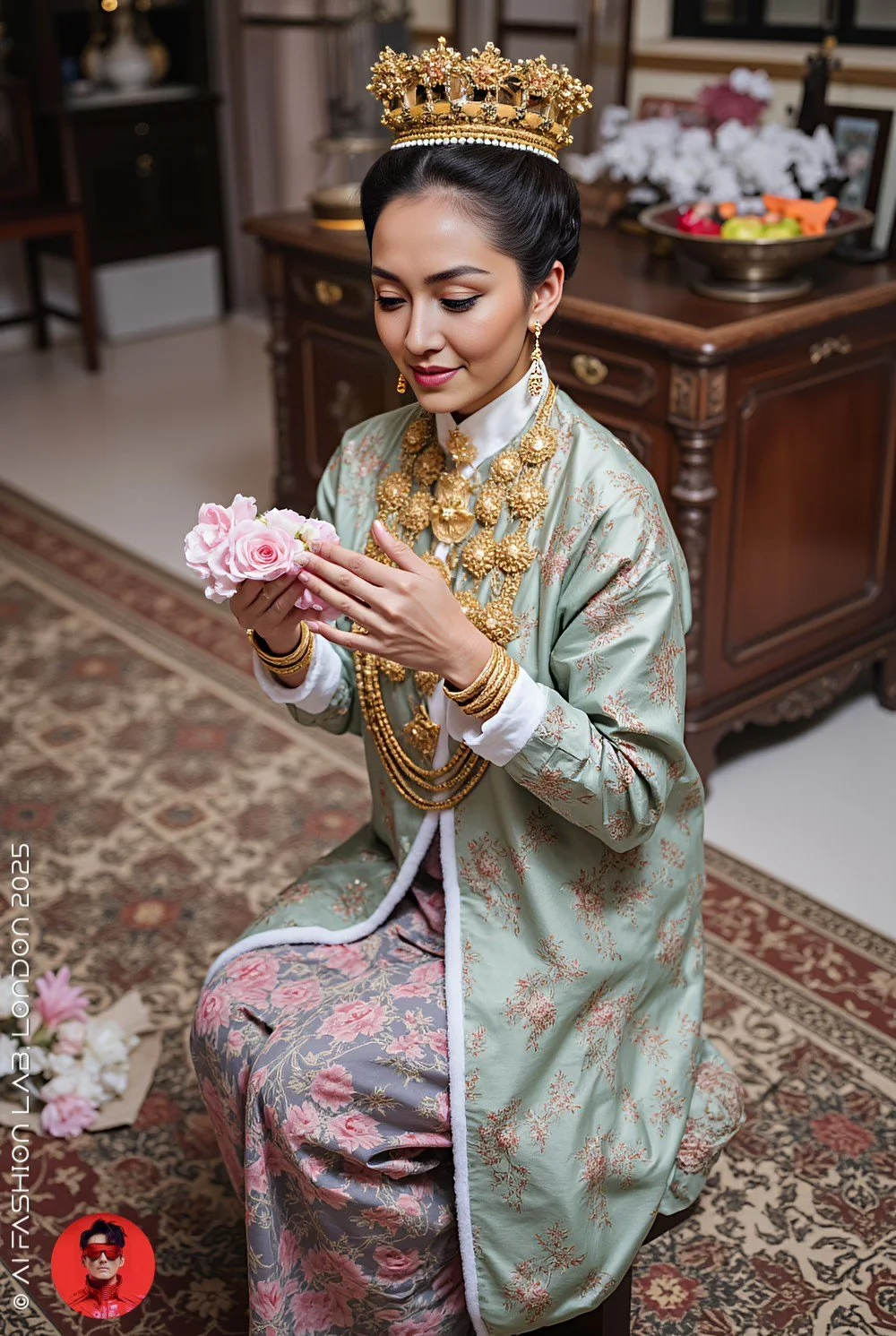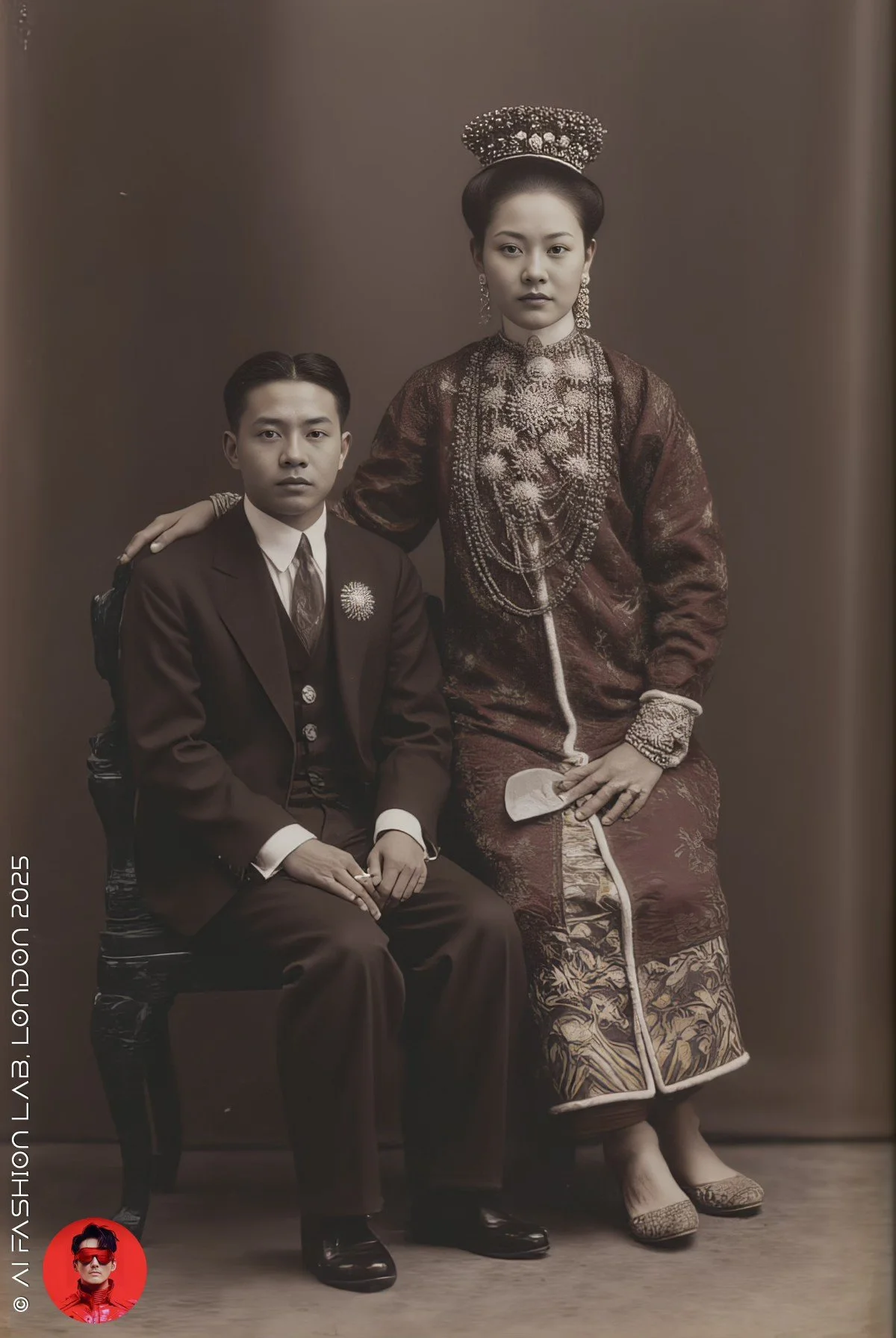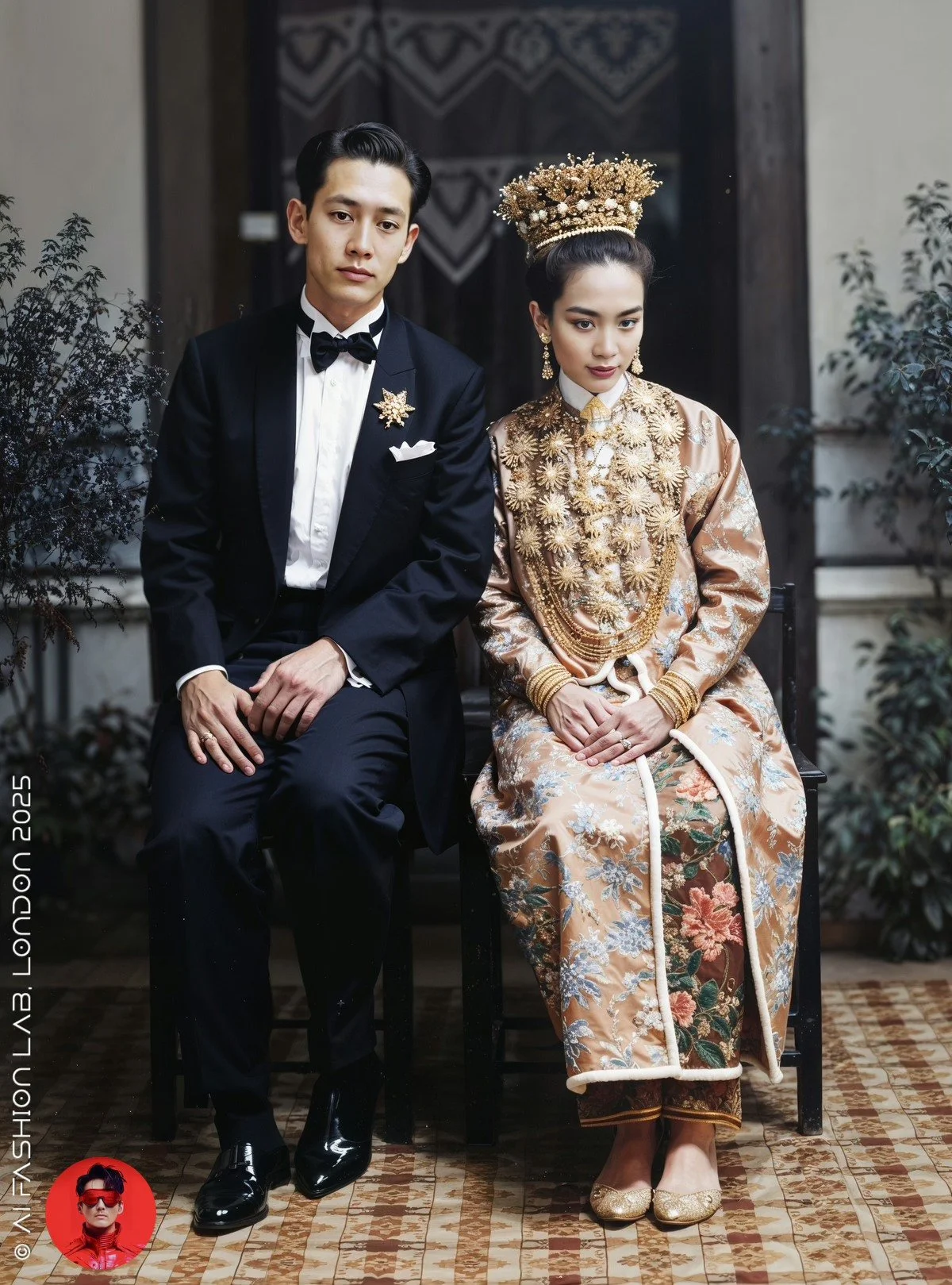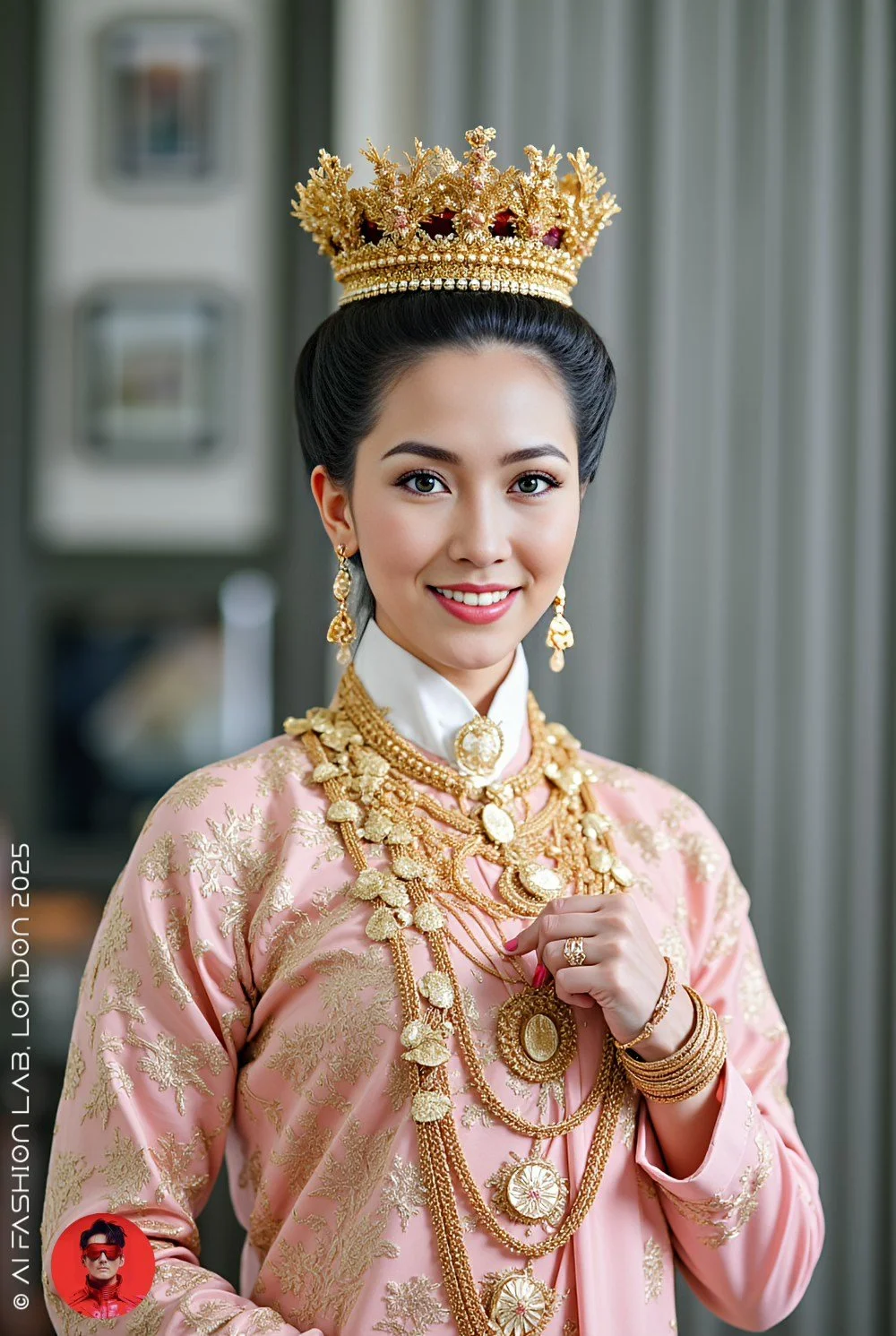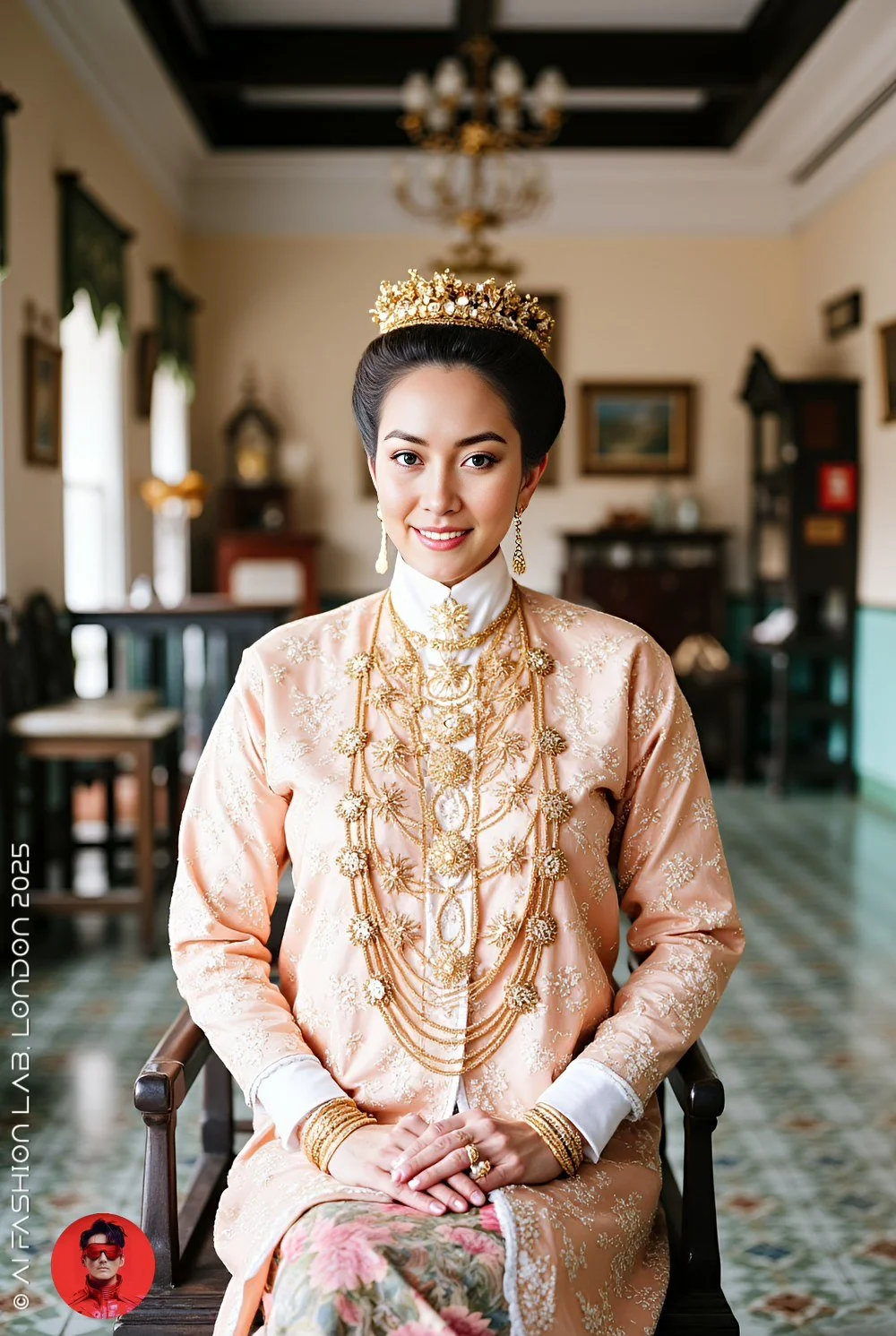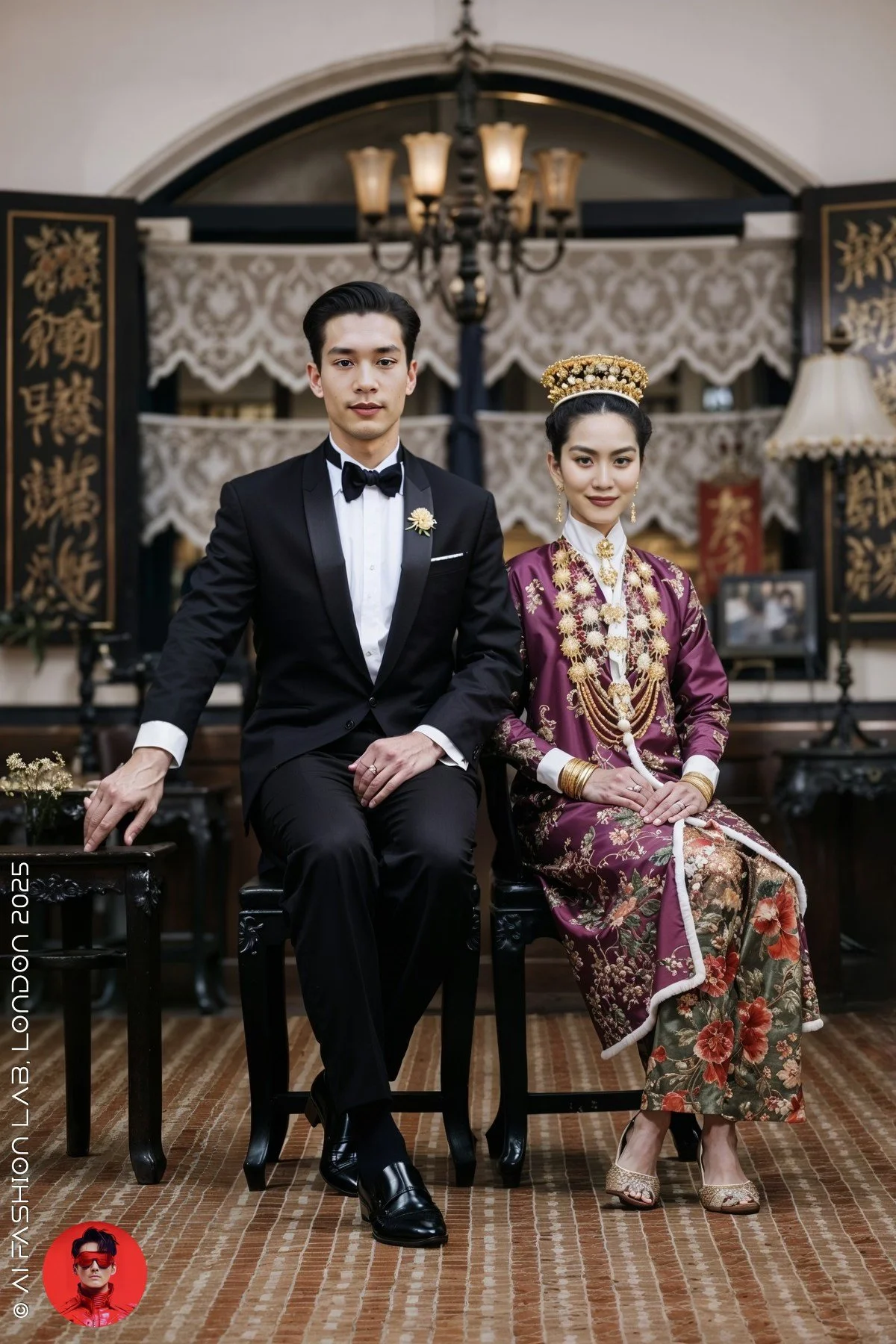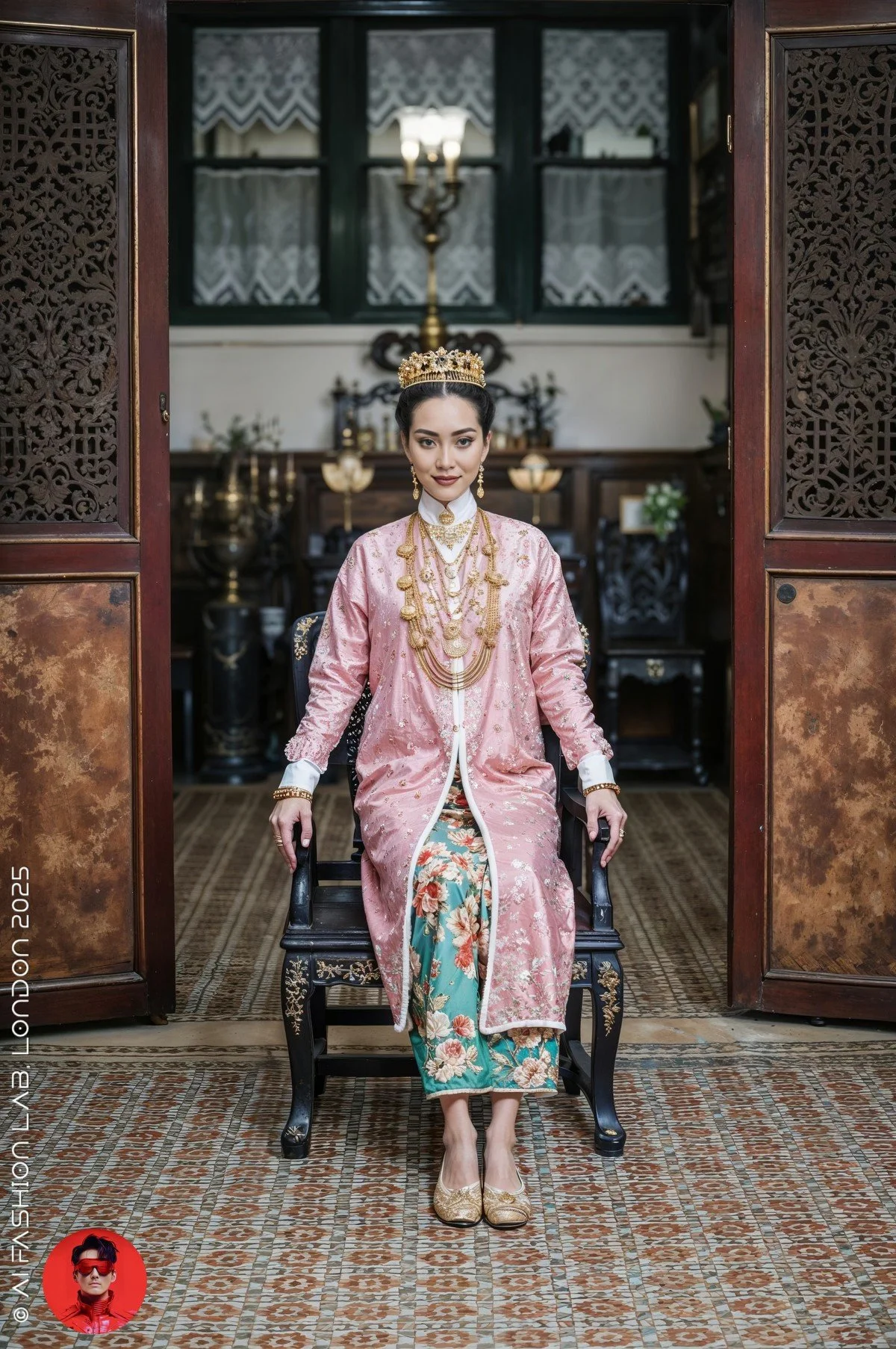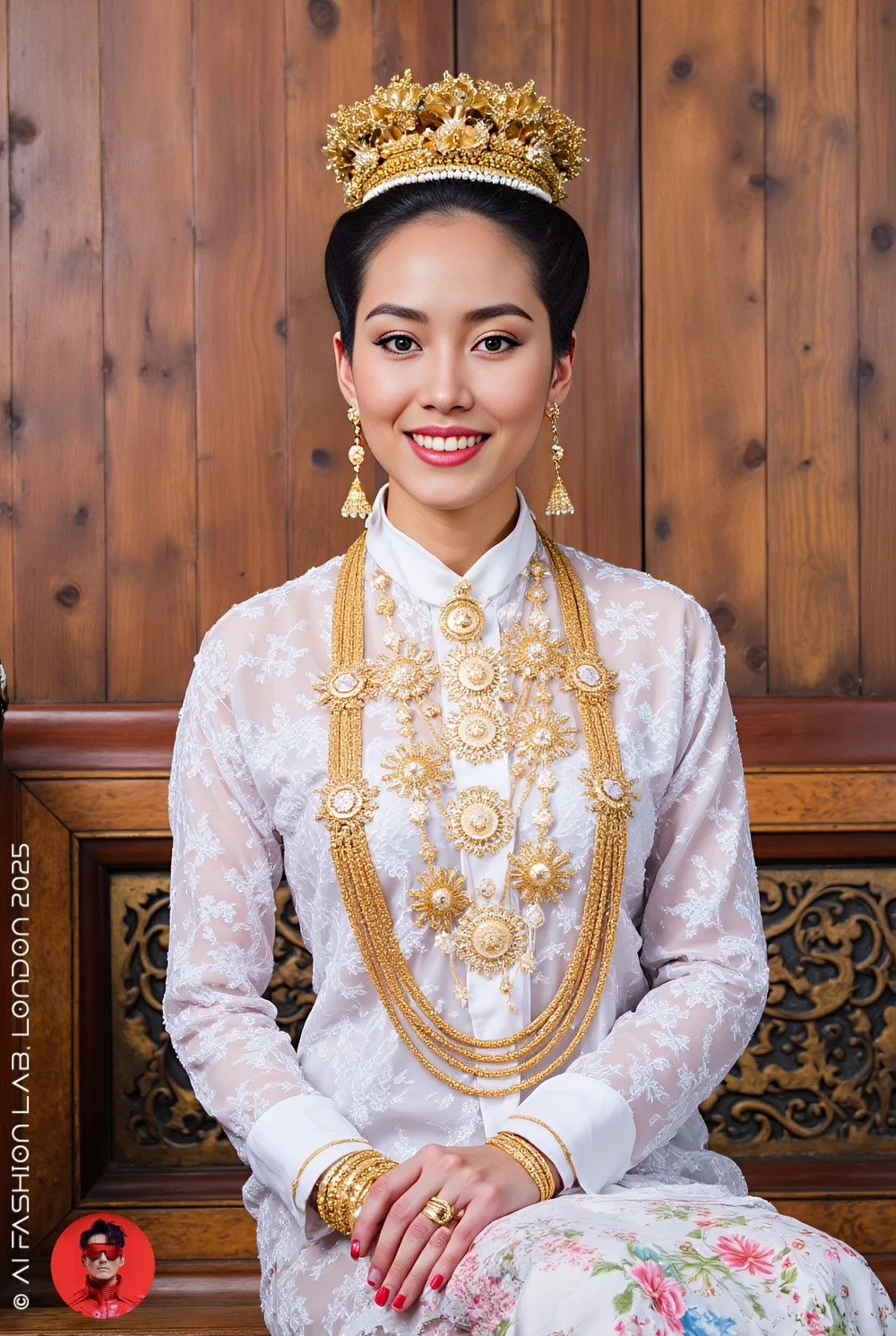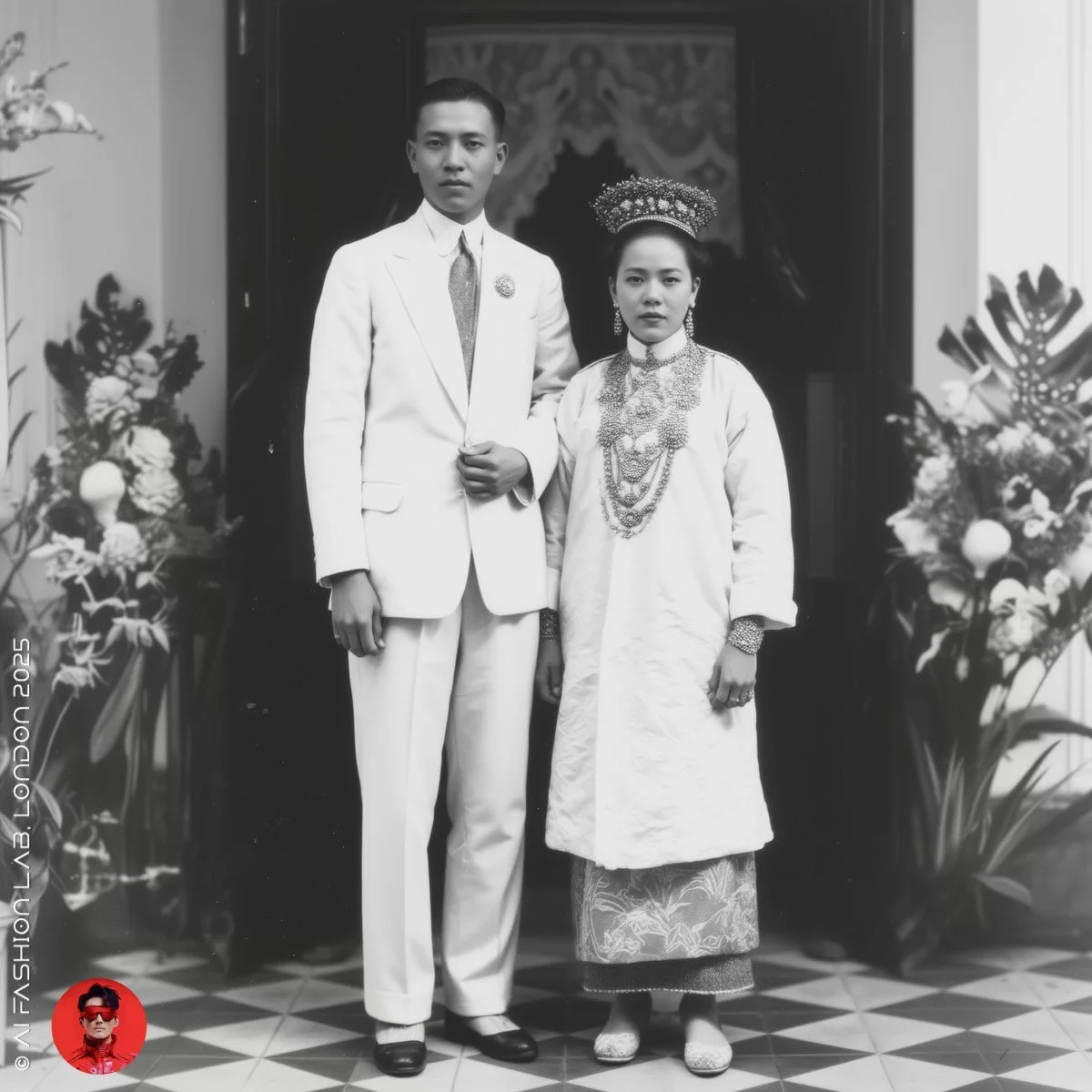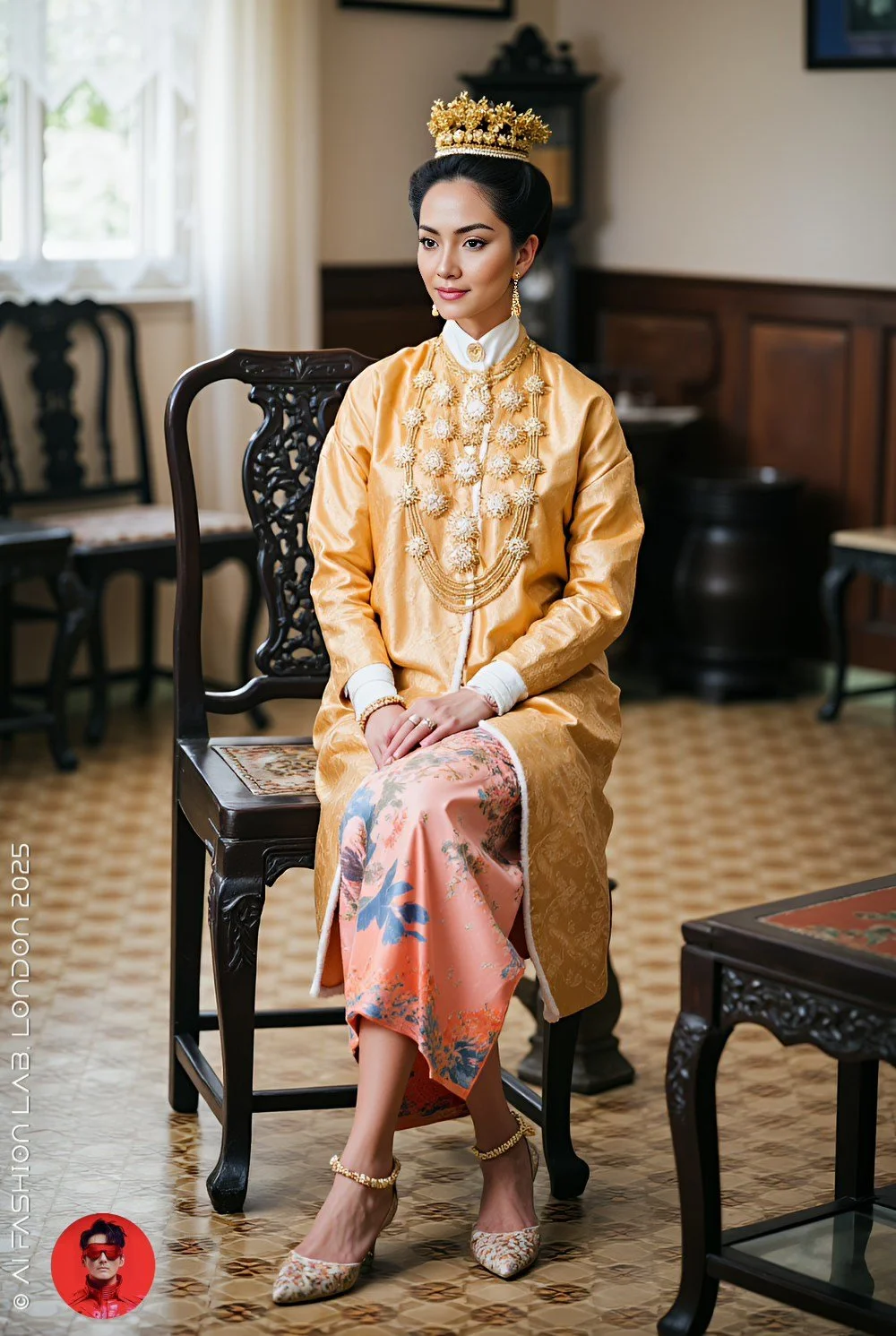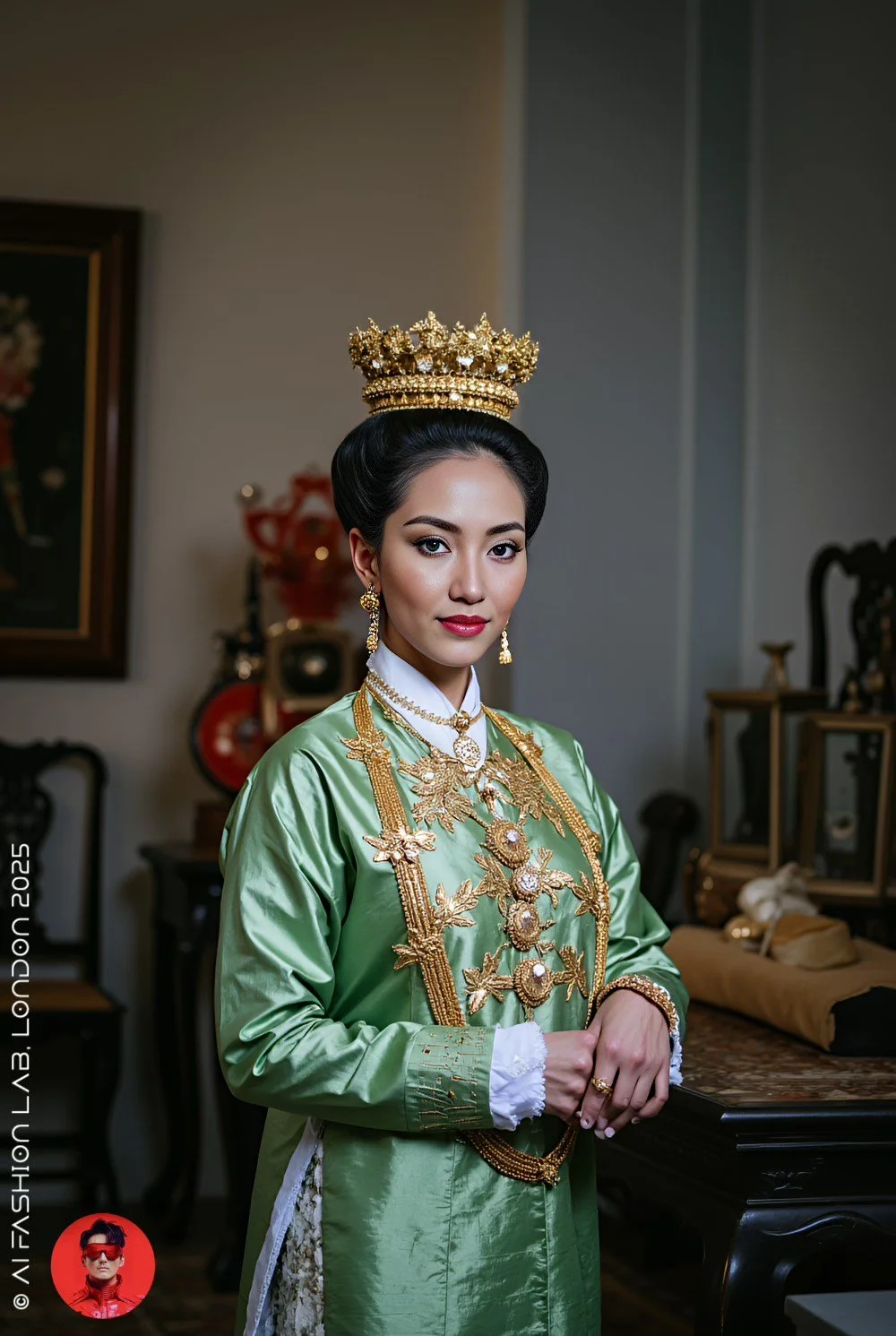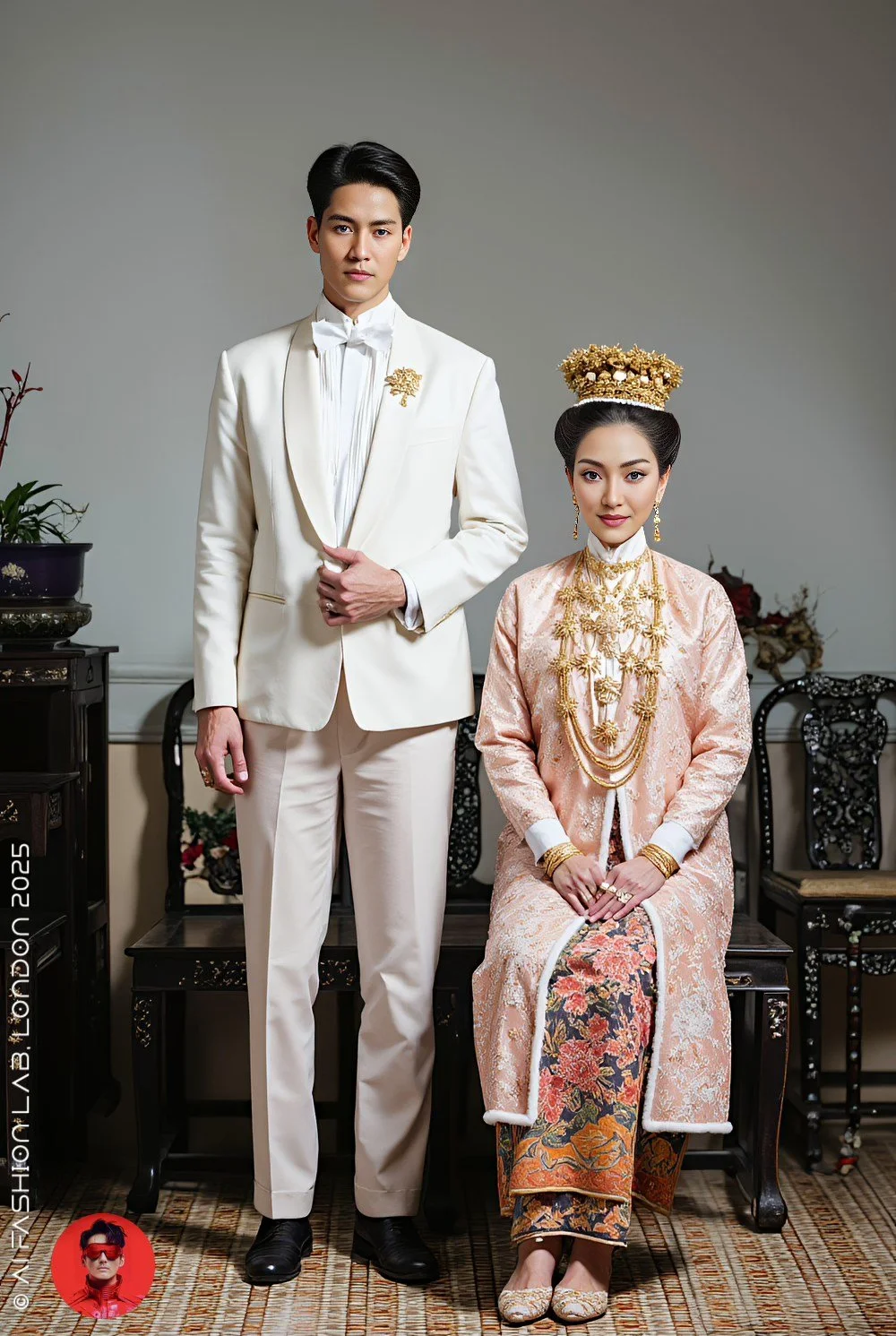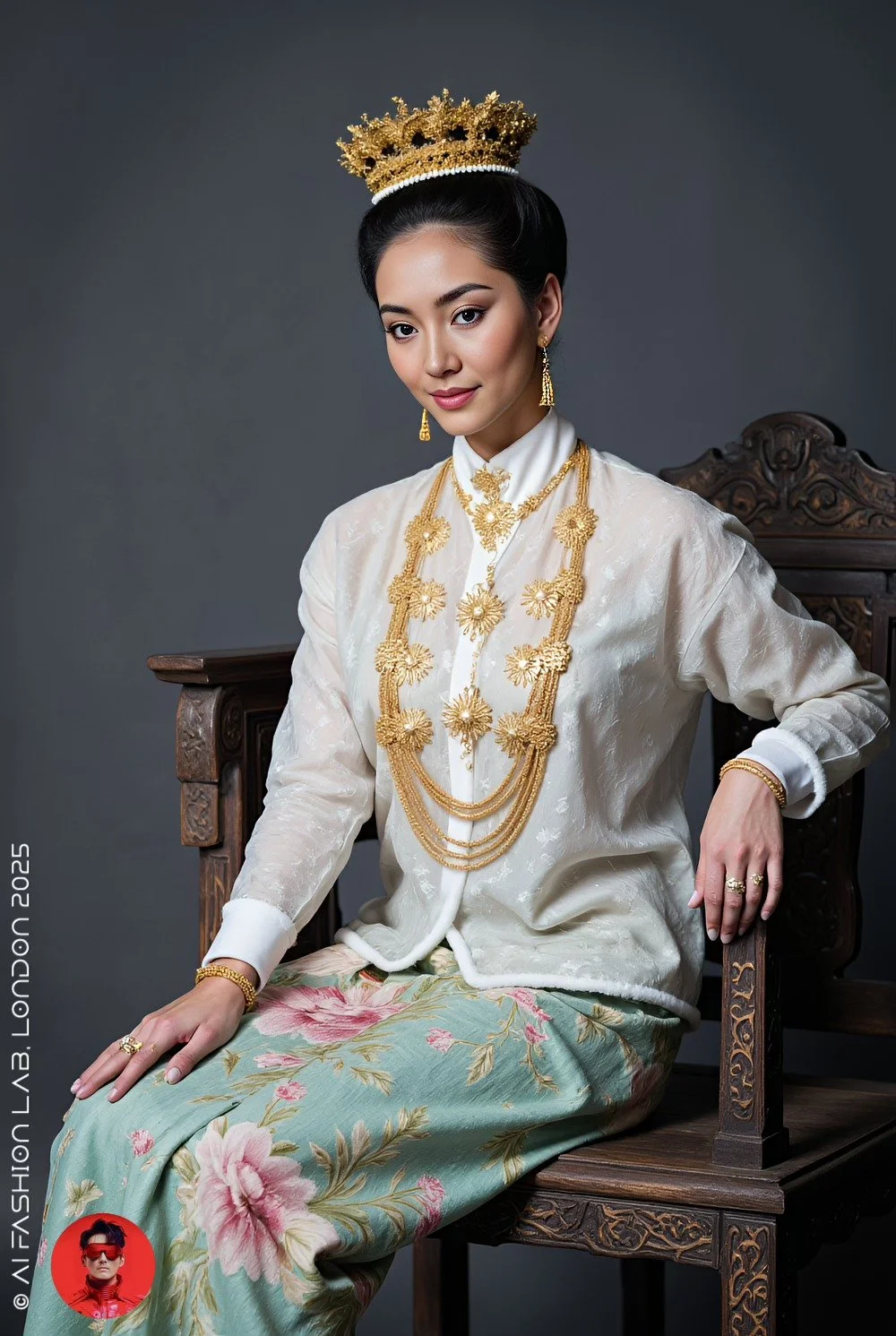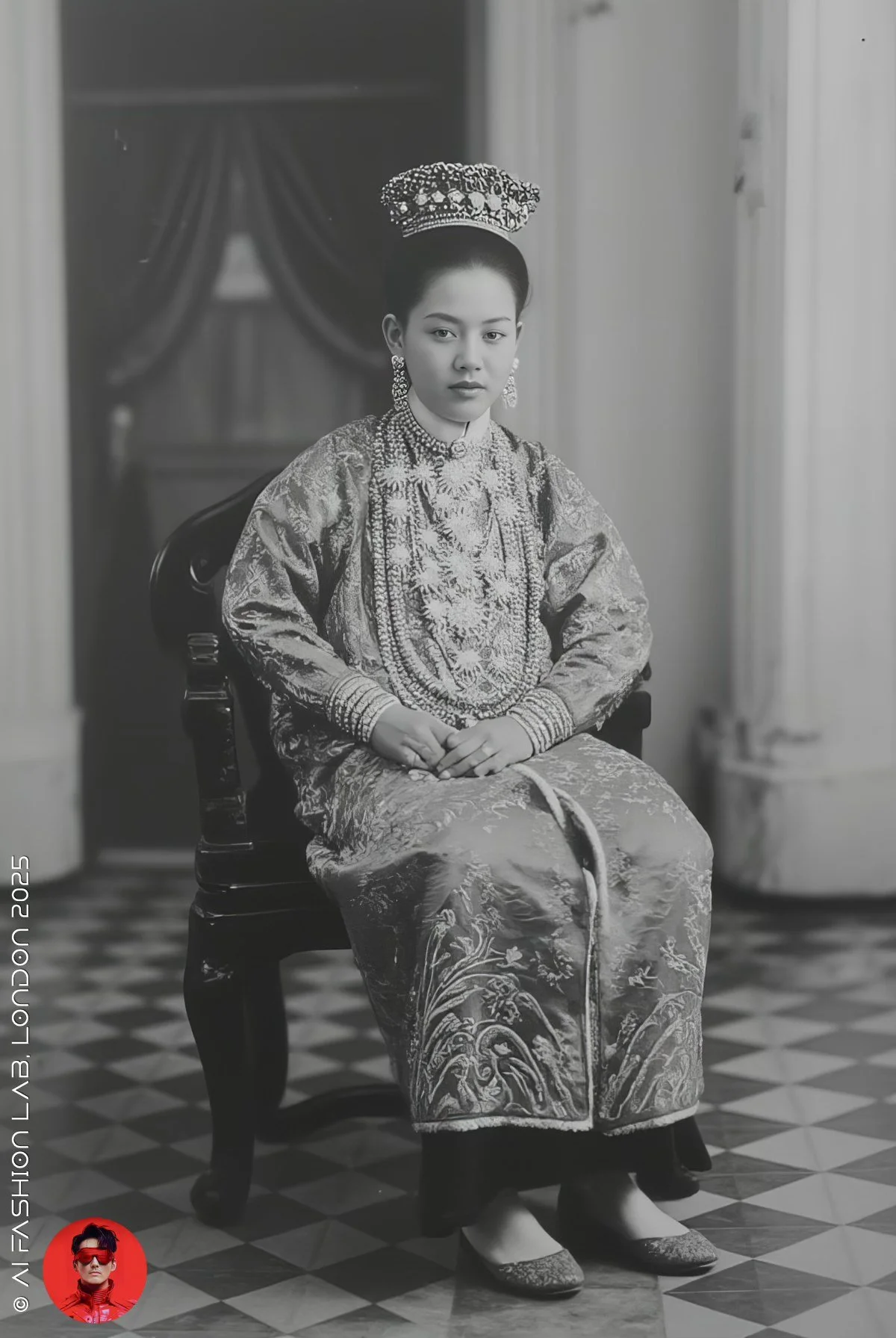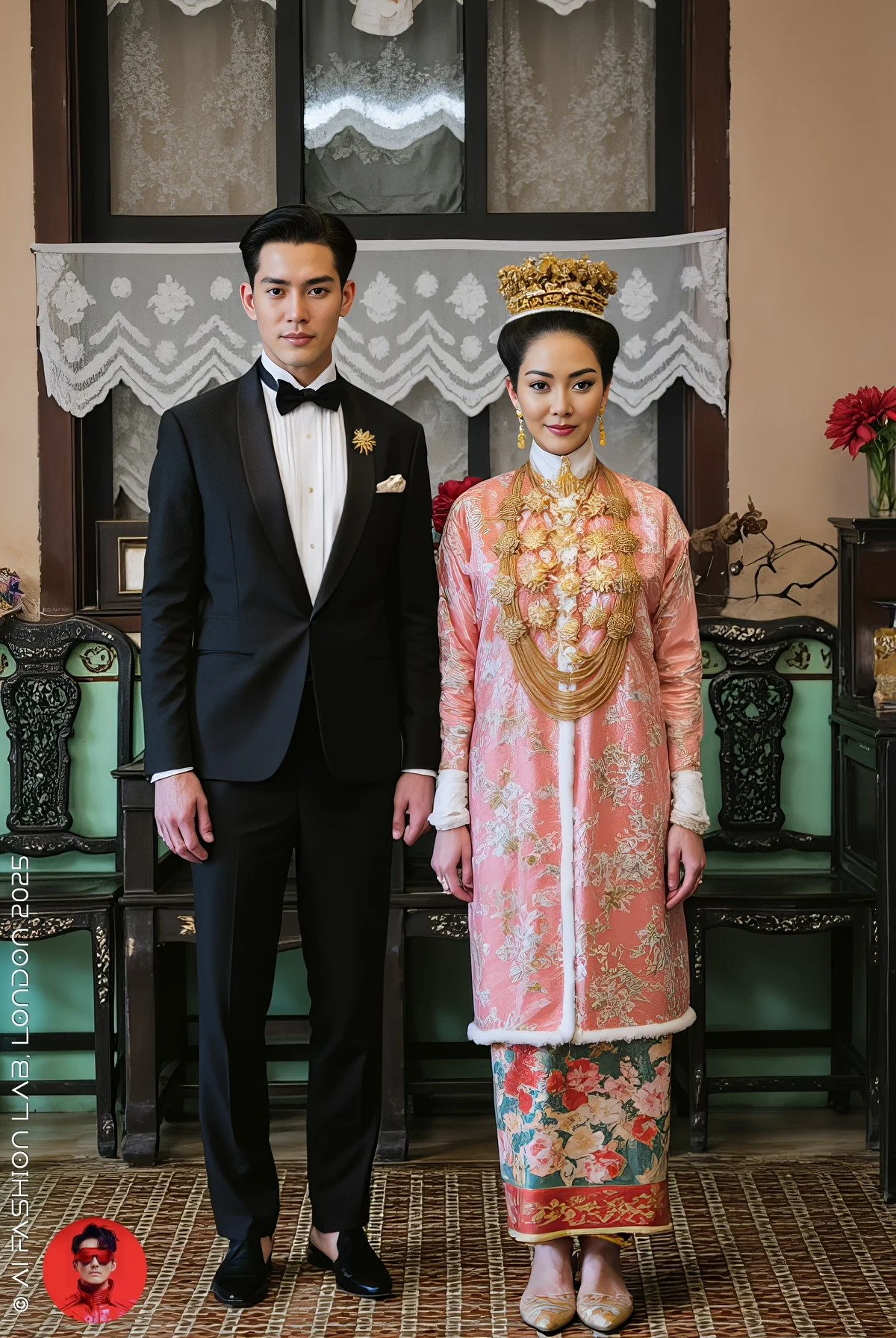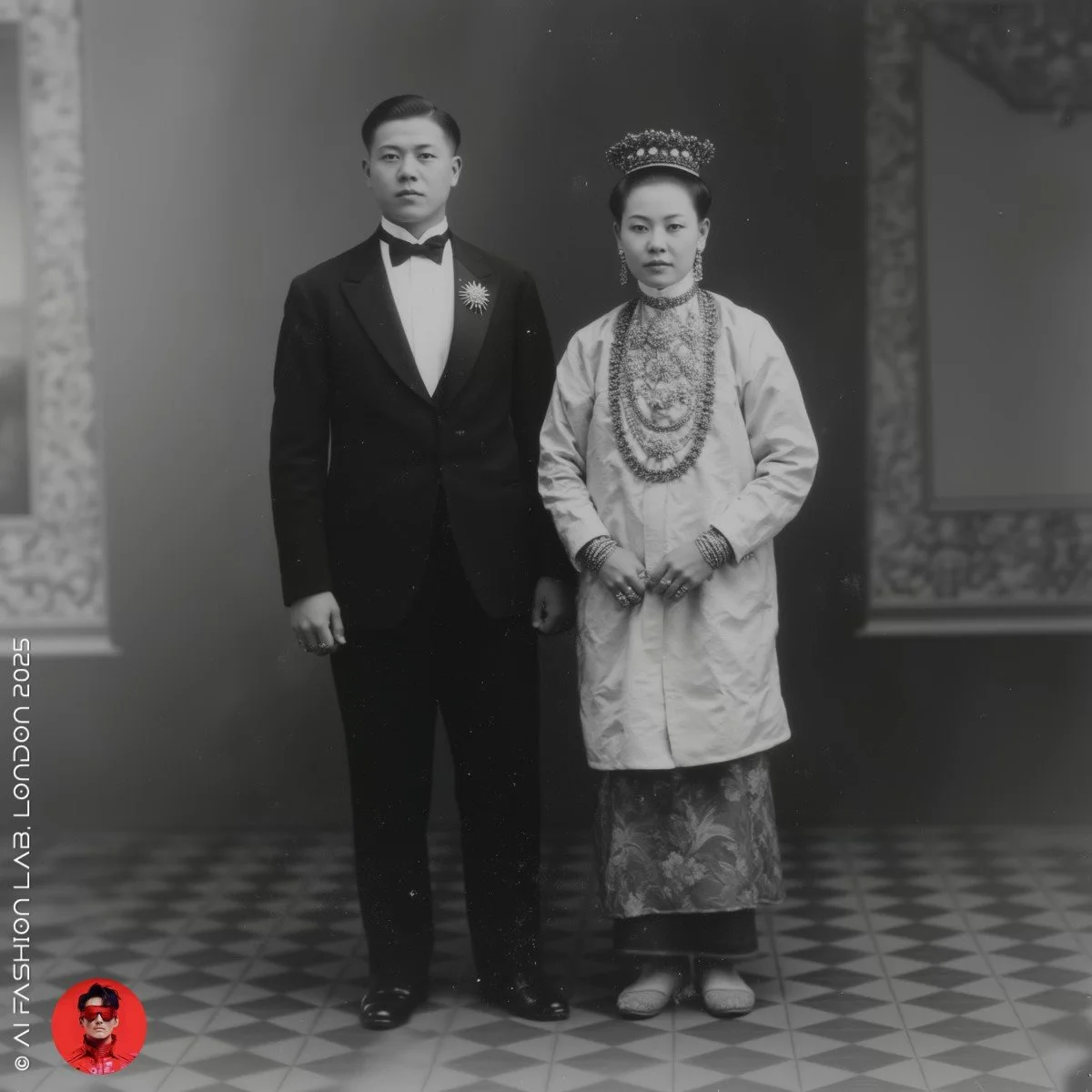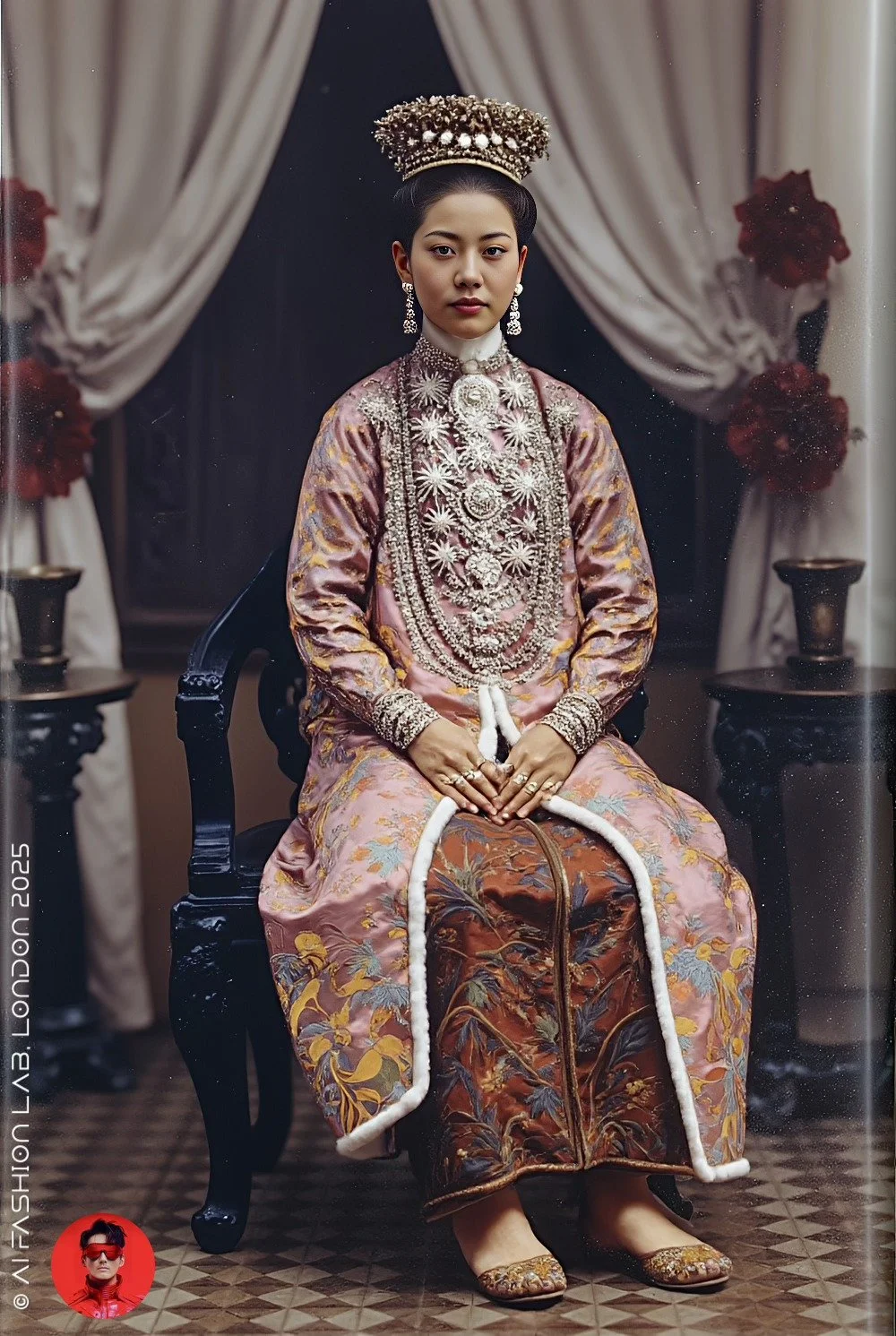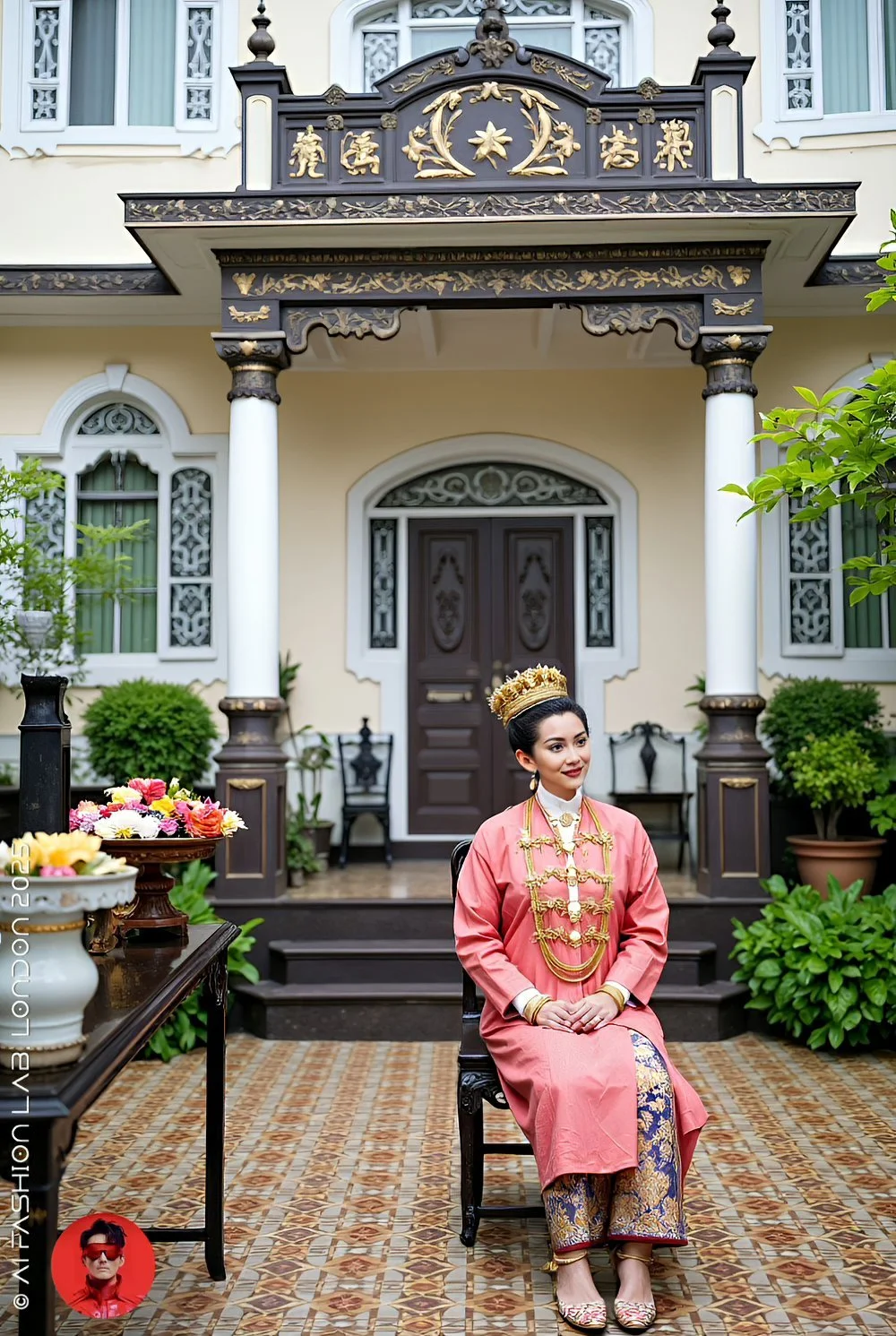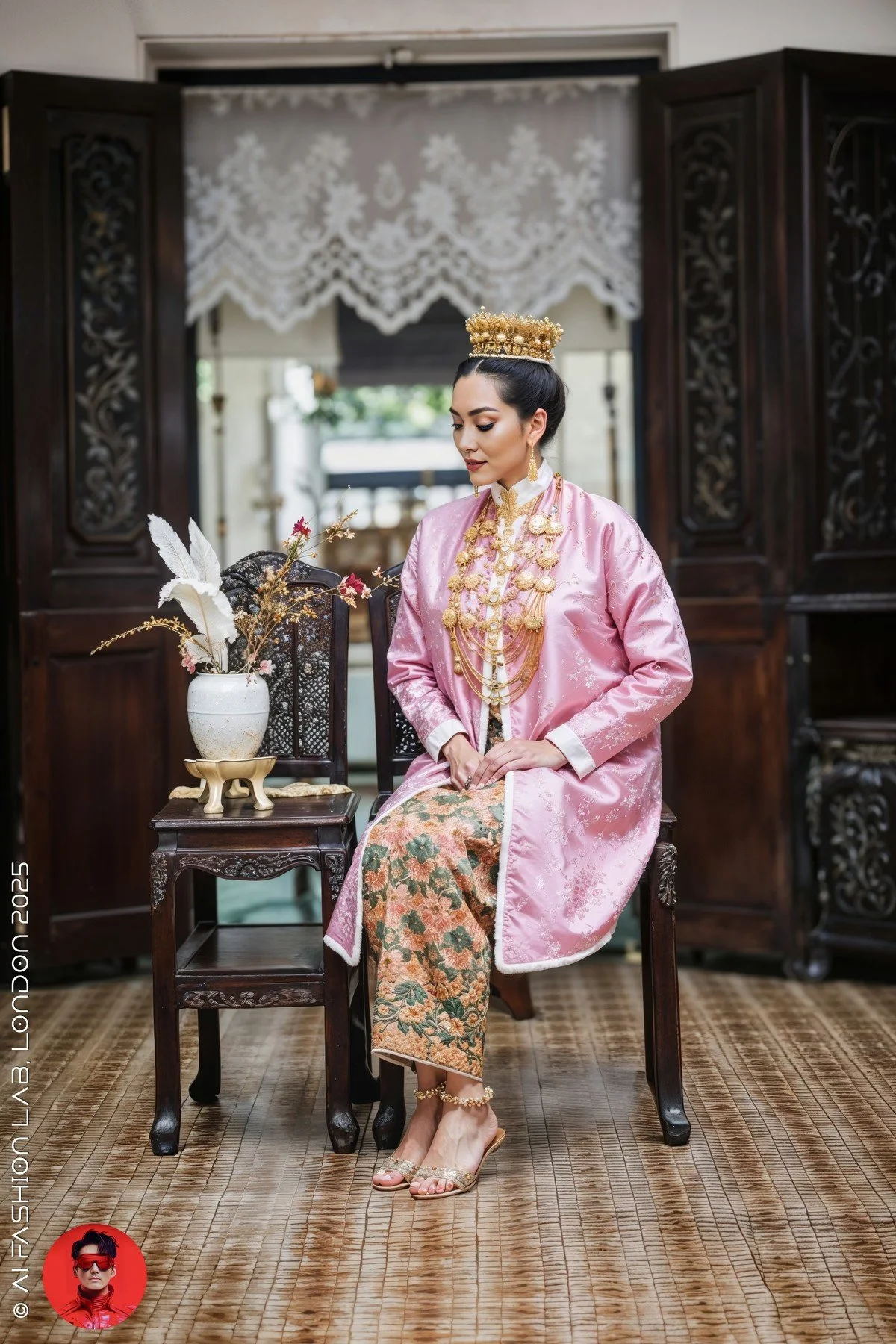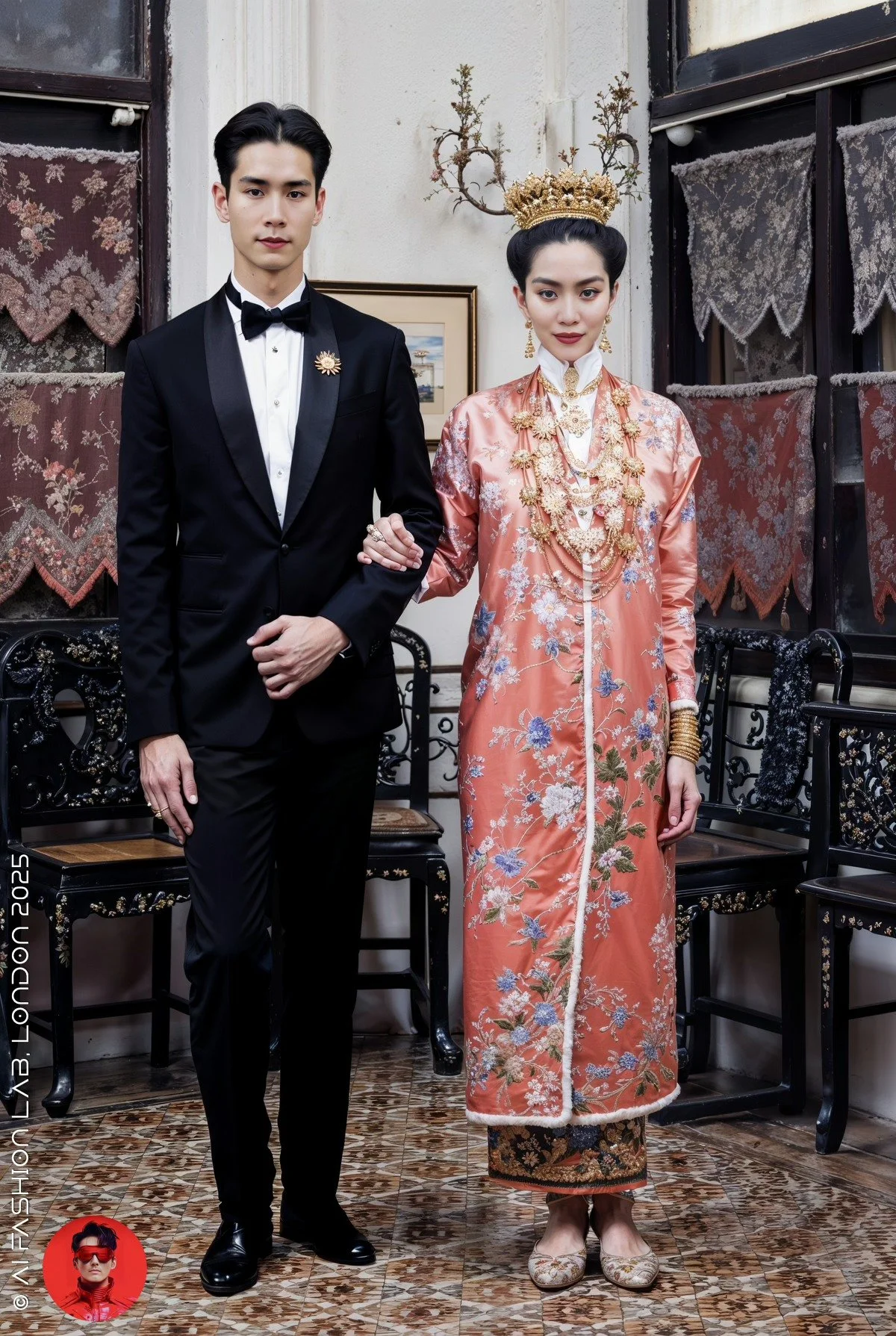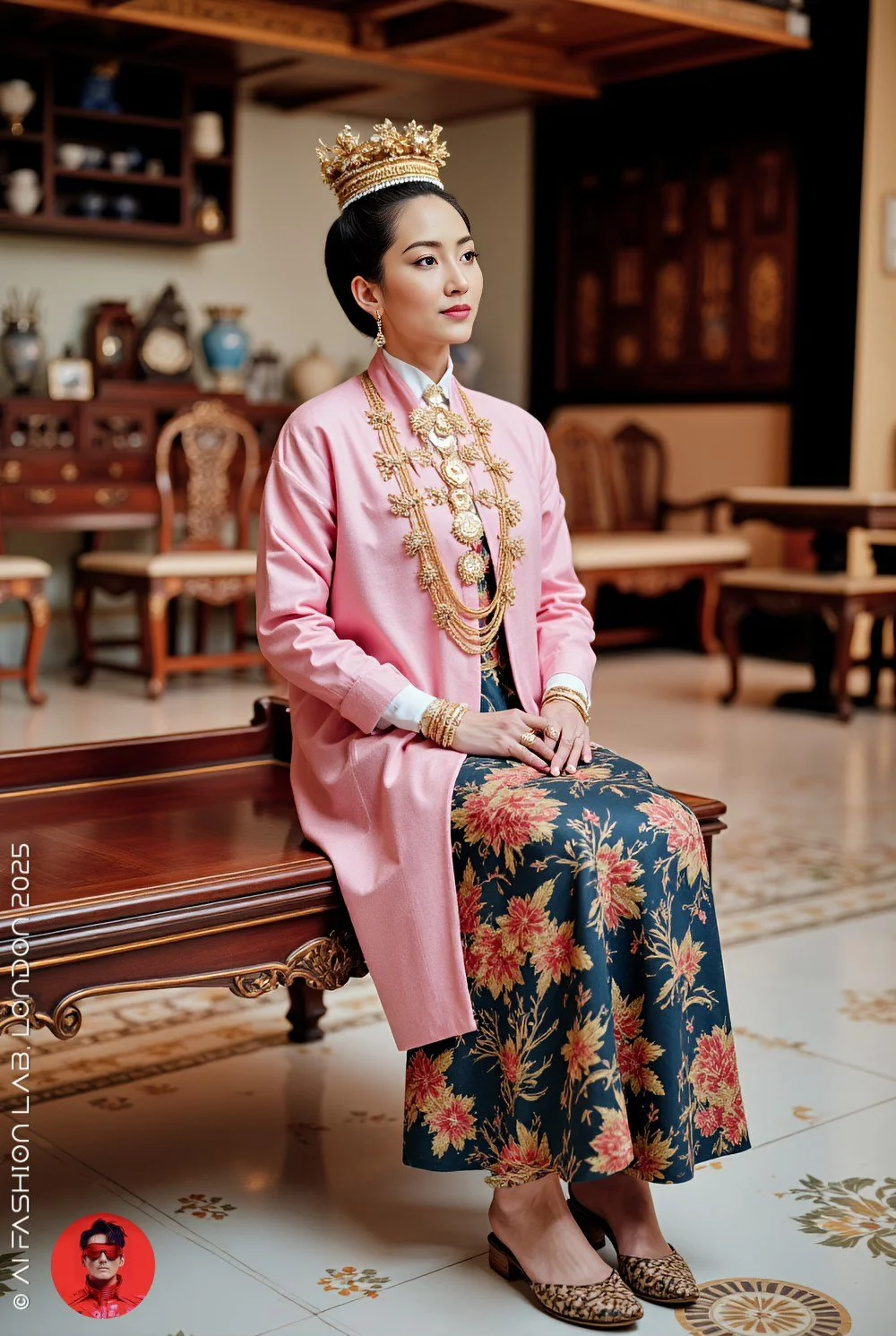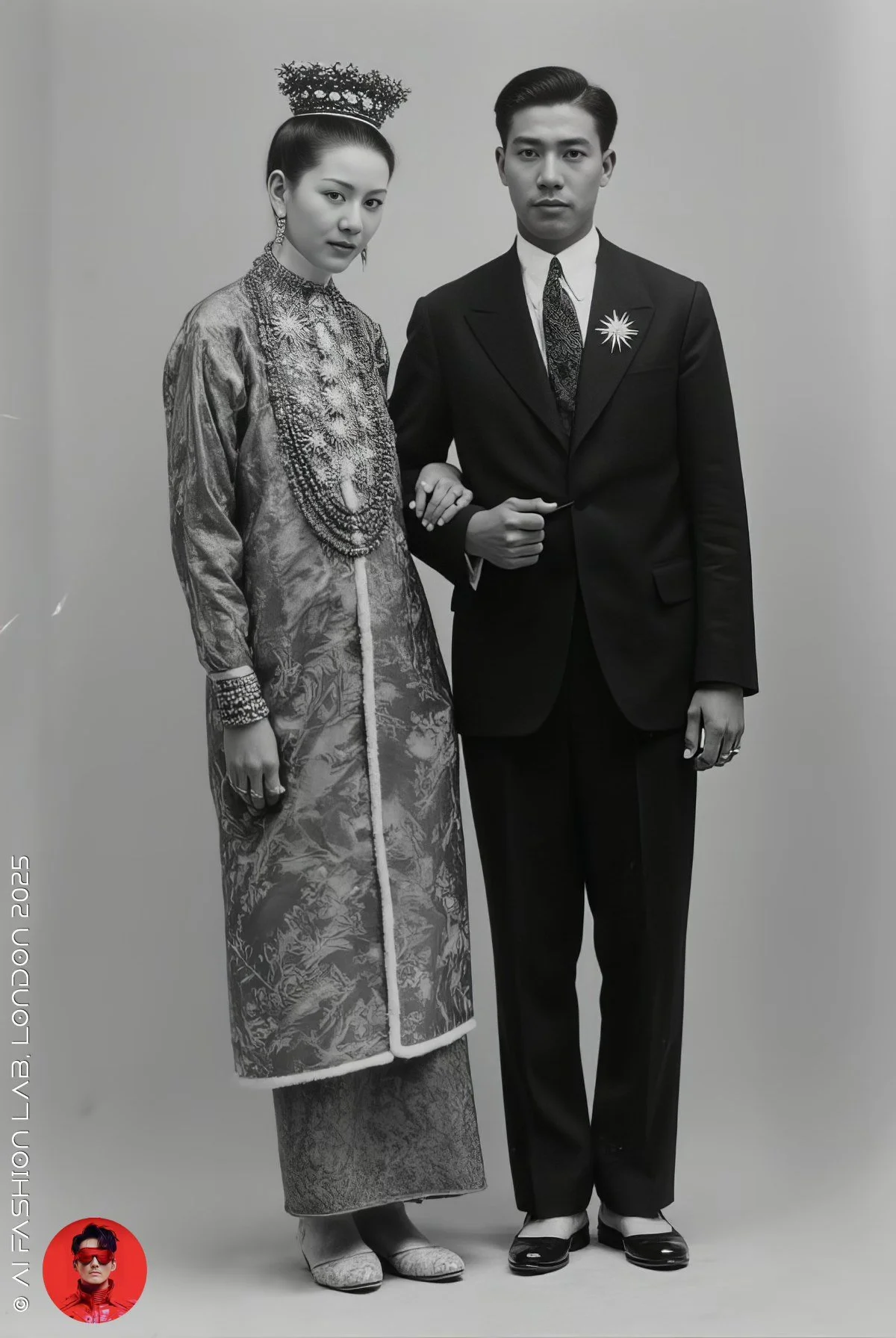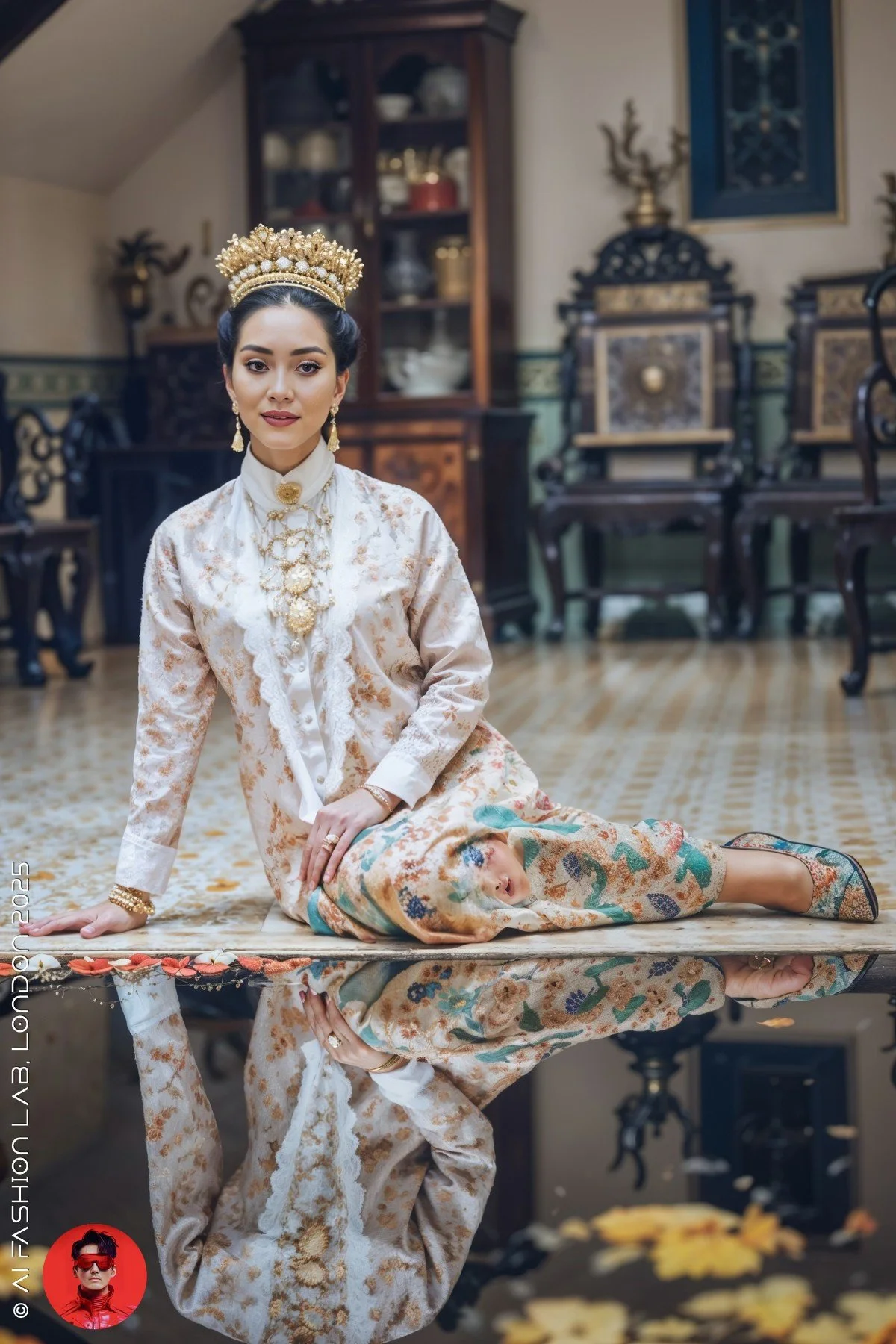งานแต่งงานวัฒนธรรมเพอรานากัน
งานแต่งงานวัฒนธรรมเพอรานากัน
หลังจากที่เพจได้ร่วมงานกับ #พิพิธภัฑณ์จังหวัดระนอง ในการบูรณะภาพถ่ายโบราณจากสมุดภาพจังหวัดระนอง และมีหลายภาพเป็นภาพงานมงคลสมรสแบบเพอรานากัน วันนี้ผลเลยอยากนำเสนอภาพที่สร้างสรรค์ด้วย AI เกี่ยวกับการแต่งงานแบบพาราเนอกันมาให้ชมกันอีกครั้งครับ
✧ ประวัติศาสตร์แฟชั่นงานแต่งงานวัฒนธรรมเพอรานากัน: การแต่งกายของเจ้าบ่าวและเจ้าสาว ✧
คอลเลกชันภาพ AI ชุดนี้ถ่ายทอดความงามเหนือกาลเวลาแห่งวัฒนธรรมบาบ๋า-ย่าหยา โดยมีทั้งเจ้าบ่าวและเจ้าสาว ซึ่งได้รับแรงบันดาลใจจากรูปถ่ายงานแต่งงานเพอรานากันต้นฉบับในคาบสมุทรมลายูช่วงทศวรรษ 1930s
หนึ่งในวัฒนธรรมที่ผสมผสานอย่างสวยงามและลงตัวในเอเชียตะวันออกเฉียงใต้คือ วัฒนธรรมเพอรานากัน (Peranakan) หรือที่รู้จักในชื่อ บาบ๋า-ย่าหยา ซึ่งเป็นการผสมผสานระหว่างวัฒนธรรมจีนและมลายู โดยเฉพาะในพื้นที่ สิงคโปร์ มาเลเซีย และภาคใต้ของประเทศไทย เช่น ภูเก็ต และระนอง
✧ รากเหง้าทางวัฒนธรรมของชาวเพอรานากัน ✧
เพอรานากันเกิดจากการแต่งงานระหว่างผู้อพยพชาวจีนที่มาตั้งรกรากในคาบสมุทรมลายูกับหญิงพื้นเมืองในท้องถิ่น ลูกหลานชายถูกเรียกว่า “บาบ๋า” และฝ่ายหญิงเรียกว่า “ย่าหยา” โดยชุมชนนี้พัฒนาเอกลักษณ์เฉพาะตัวที่เห็นได้ชัดเจนในภาษา อาหาร สถาปัตยกรรม และ เครื่องแต่งกาย ซึ่งกลายเป็นมรดกทางวัฒนธรรมที่โดดเด่นยิ่งในภาคใต้ฝั่งตะวันตกของประเทศไทย
✧ ชุดเจ้าสาวเพอรานากัน ✧
การแต่งกายของเจ้าสาวเพอรานากัน ในยุค 1930s นั้นอุดมไปด้วยรายละเอียดที่สะท้อนถึงรสนิยม ความประณีต และฐานะของผู้สวมใส่ ชุดเจ้าสาวส่วนใหญ่ประกอบด้วยเสื้อและผ้าที่ได้รับอิทธิพลจากวัฒนธรรมมลายูอย่างชัดเจน ได้แก่:
* เสื้อย่าหยา (Kebaya Nyonya) ซึ่งเป็นเสื้อคลุมบางเบา ปักลวดลายอย่างละเอียดด้วยมือ โดยเฉพาะลายดอกไม้ ผีเสื้อ และสัตว์มงคล ลักษณะของเสื้อนี้ได้รับแรงบันดาลใจจากเสื้อคลุมของชาวมลายูที่ปรับให้เข้ากับสไตล์ของผู้หญิงเชื้อสายจีน
* โสร่งผ้าปาเต๊ะ (Batik Sarong) ที่มีลวดลายเฉพาะตัว สะท้อนรากเหง้าของงานหัตถกรรมชาวมลายู ซึ่งภายหลังถูกผสมผสานกับลวดลายจีนจนเกิดเป็นแบบฉบับเฉพาะของเพอรานากัน
* เข็มกลัดกอรอสัง (Kerongsang) สามชิ้น ใช้กลัดเสื้อแทนกระดุม
* ฮั้วก๋วน (Hua Guan) มงกุฎดอกไม้ไหวประจำวันแต่งงาน
เสื้อผ้าและเครื่องแต่งกายของเจ้าสาวเพอรานากันจึงถือเป็นการผสมผสานศิลปะการแต่งกายของจีนและมลายูไว้อย่างงดงาม เกิดเป็นสไตล์เฉพาะที่ไม่เหมือนใคร
✧ ชุดเจ้าบ่าวเพอรานากัน ✧
เจ้าบ่าวในยุค 1930s มักแต่งกายด้วยแบบสากลตะวันตกผสมกลิ่นอายท้องถิ่น ประกอบด้วย:
* สูทตัดเย็บประณีต สีขาวหรือครีมหรือสีโทนเข้ม และทักซิโด้
* รองเท้าหนังขัดมัน
* เครื่องประดับสำคัญของเจ้าบ่าว ได้แก่
* ปิ่นตั้ง (Bintang) เข็มกลัดรูปดาว 6 หรือ 8 แฉก ทรงกลมนูน ซึ่งส่วนใหญ่มักประดับด้วยเพชรเพื่อบ่งบอกยศถาบรรดาศักดิ์
* คอสาร์ท (Corsage) ที่ทำจาก ขนกระต่าย สวมไว้ที่หน้าอก สื่อถึงการเป็นเจ้าบ่าวโดยเฉพาะ
ทั้งปิ่นตั้งและคอสาร์ทของเจ้าบ่าวจะปรากฏเฉพาะในวันแต่งงานเท่านั้น
✧ มรดกเพอรานากันในภาคใต้ฝั่งตะวันตกของประเทศไทย ✧
ย่านเมืองเก่าภูเก็ตและระนองคือศูนย์รวมของวัฒนธรรมเพอรานากัน ไม่ว่าจะเป็นบ้านเรือนสไตล์ชิโน-โปรตุกีส อาหารฟิวชัน และ การแต่งกายบาบ๋า-ย่าหยา ที่ยังคงพบเห็นได้ในงานเทศกาลท้องถิ่น โดยเฉพาะในภูเก็ต เทศกาลแต่งงานบาบ๋า-ย่าหยา ซึ่งจัดขึ้นทุกปีและได้รับความนิยมจากทั้งชาวไทยและนักท่องเที่ยว ว่ากันว่ามากกว่า 70% ของชาวภูเก็ตและระนองมีเชื้อสายเพอรานากัน ทำให้สองเมืองนี้เปรียบเสมือนพิพิธภัณฑ์มีชีวิตแห่งวัฒนธรรมจีน-มลายู
✧ AI กับการอนุรักษ์มรดกทางวัฒนธรรม ✧
คอลเลกชันนี้เป็นการ สร้างภาพด้วย AI โดยได้รับแรงบันดาลใจจากงานแต่งงานของวัฒนธรรมเพอรานากันยุค 1930s ทุกภาพผ่านการออกแบบที่แน้นความถูกต้องทางประวัติศาสตร์ เพื่อถ่ายทอดรายละเอียดของ แฟชั่น ผ้า เครื่องประดับ และอารมณ์ของเจ้าบ่าว-เจ้าสาว ให้ใกล้เคียงของจริงที่สุด ภาพเหล่านี้ไม่ใช่ภาพถ่ายจริง แต่เป็นผลงานที่สร้างขึ้นด้วยเทคโนโลยี AI เพื่อถ่ายทอดความงามเหนือกาลเวลาของวัฒนธรรมเพอรานากัน
History of Peranakan Wedding Culture
After our page collaborated with the Ranong Provincial Museum in restoring historical photographs from the Ranong Photo Album — many of which depicted Peranakan wedding ceremonies — we are delighted today to present once again a series of AI-created images depicting Peranakan weddings.
✧ The Fashion History of Peranakan Wedding Culture: Attire of the Bride and Groom ✧
This AI image collection captures the timeless elegance of Baba–Nyonya culture, featuring both brides and grooms inspired by original Peranakan wedding photographs taken in the Malay Peninsula during the 1930s.
One of Southeast Asia’s most beautifully blended cultures is the Peranakan (Baba–Nyonya) heritage — a harmonious fusion of Chinese and Malay traditions, especially prominent in Singapore, Malaysia, and southern Thailand in provinces such as Phuket and Ranong.
✧ The Cultural Roots of the Peranakan People ✧
The Peranakan community was born from marriages between Chinese immigrants who settled in the Malay Peninsula and local indigenous women. Male descendants were called Baba, and female descendants Nyonya. This community developed a distinct identity expressed through its language, cuisine, architecture, and clothing, forming a unique cultural heritage that remains prominent in Thailand’s southwestern coastal provinces.
✧ Peranakan Bridal Attire ✧
Peranakan bridal wear in the 1930s was rich in details reflecting refinement, taste, and social status. Common bridal attire included:
Kebaya Nyonya – A sheer, delicately embroidered blouse, often featuring floral, butterfly, or auspicious animal motifs, inspired by Malay tunics but adapted to Chinese women’s style.
Batik Sarong – A patterned wrap skirt showcasing Malay craftsmanship, later blended with Chinese motifs to form a distinctive Peranakan design.
Kerongsang – A set of three brooches used to fasten the blouse instead of buttons.
Hua Guan – A floral wedding headdress featuring delicate, dangling ornaments.
This combination of garments and accessories represented an exquisite union of Chinese and Malay dress traditions, creating a style unique to the Peranakan.
✧ Peranakan Groom’s Attire ✧
Grooms in the 1930s often wore a fusion of Western formalwear with subtle local touches, including:
A finely tailored suit — in white, cream, or dark tones — or a tuxedo.
Polished leather shoes.
Key groom-specific adornments:
Bintang – A star-shaped brooch with six or eight points, often diamond-set, signifying rank or status.
Corsage – Made from rabbit fur and worn on the chest, symbolising the groom’s role.
Both the Bintang and corsage were worn only on the wedding day.
✧ The Peranakan Legacy in Southwestern Thailand ✧
The old town districts of Phuket and Ranong are cultural hubs for the Peranakan way of life, featuring Sino–Portuguese architecture, fusion cuisine, and Baba–Nyonya dress still seen at local festivals. Phuket, in particular, hosts an annual Baba–Nyonya wedding festival that attracts both locals and tourists. It is said that over 70% of Phuket and Ranong residents have Peranakan ancestry, making these two cities living museums of Chinese–Malay heritage.
✧ AI and the Preservation of Cultural Heritage ✧
This collection was created using AI, inspired by 1930s Peranakan wedding traditions. Each image was carefully designed with an emphasis on historical accuracy, capturing the fashion, textiles, accessories, and emotional atmosphere of the bride and groom. These are not real photographs, but AI-generated works crafted to convey the timeless beauty of the Peranakan heritage.
#aifashionlab #AI #aiartist #aiart #aifashion #aifashiondesign #aifashionstyling #aifashiondesigner #fashion #fashionhistory #historyoffashion #fashionstyling #fashionphotography #digitalfashion #digitalfashiondesign #digitalcostumedesign #digitaldesign #digitalaiart #ThaiFashionHistory #ThaiFashionAI #thailand #UNESCO






